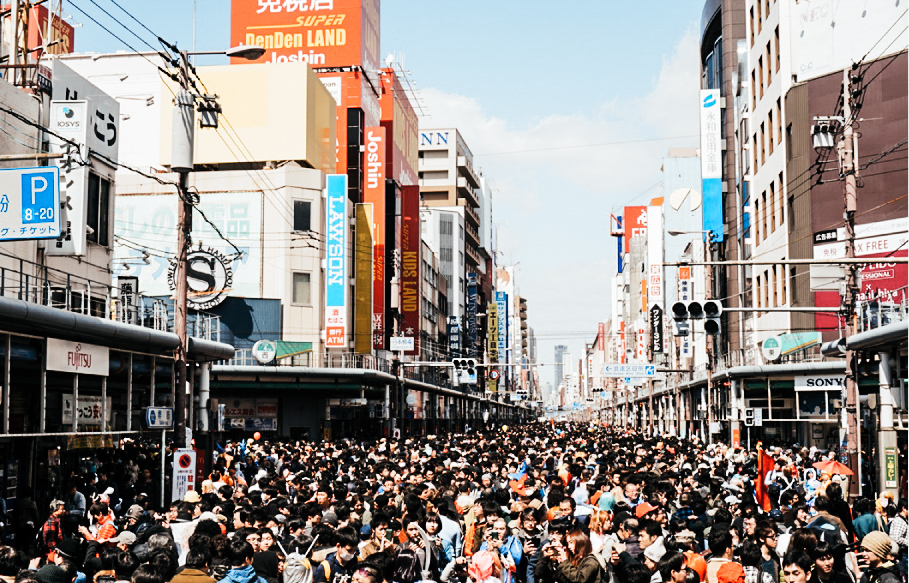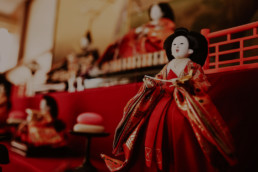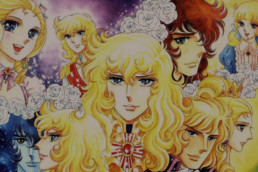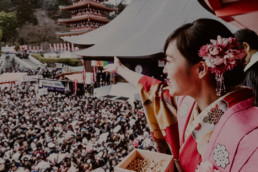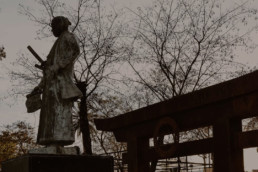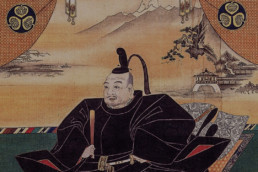Japan Folklore: Nippombashi Street Festa
photo credits: jnto.go.jp
In Osaka, anime and manga come to life
Every year since 2005, between early days and mid-March, the streets of Den Den Town located between Ebisucho Station and Nihonbashi are closed to car traffic for the biggest cosplay event in all of Japan: the Nippombashi Street Festa (日本橋ストリートフェスタ).
Den Den Town is the electronic district of Osaka that, thanks to its toy stores, video games stores and computer stores, has begun to attract a large number of manga and anime fans, soon turning into one of the "sacred" destinations for Otaku. Each year the festival is enhanced by attracting not only the local but also a more international audience!

photo credits: reddit.com
The Festival begins!
Preparations for the event start around 11:00 am with the roads closing to traffic. Here, above the street the main stage on which guests, cosplayers and sponsors alternate throughout the day is built.
The opening ceremony begins at 12.00 pm when a road is created for the parade of the 1,000 best cosplayers from around the world. After the show, cosplayers perform and pose for all those wishing to approach their favorite character. Many of them take advantage of the event to promote their socials accounts, writing their address on whiteboards or signs placed next to them while they are immortalized in the poses studied in advance.
Obviously the event is not open only to professionals, but hundreds and hundreds of people wear their own costume. It doesn’t matter if this belongs to pop culture, anime, manga, video games or even cartoons and characters from American comics (especially Marvel, Adventure Time and Star Wars), almost 10,000 people a year turn into their own hero! Of course, the festival is free, but if you want to participate in the parade, an entry fee of around 1,500 yen is needed.
The event is also the perfect opportunity to find unique designs by Nippombashi Street Festa and exclusive goods.

photo credits: nippombashi.jp
The cultural exchange project between Japan and France and an exceptional ambassador
From 2018, year of the 160th anniversary of friendship between France and Japan, the 「Japan-France pop culture Exchange project」was promoted in order to deepen the cultural exchange between manga, animation, music and other aspects of Japanese pop culture with the France in collaboration with the「Japan Expo」.
To disseminate the event and make it even more alive, KAMIJO, the talented Japanese artist who became particularly famous in France, was chosen as the project's ambassador.
This year the Nippombashi Street Festival will be held on March 9th and will be the perfect opportunity to immerse yourself not only in the magical world of fantasy, but also in the musical world!
Japan Tradition: Hinamatsuri

photo credits: mcasiwakuni.marines.mil
Doll’s Day
There is a special celebration held annually on the third day of the third month in Japan known as Hina-matsuri (雛 祭 り), also known as Doll’s Day or Girl’s Day. During this celebration, the misfortunes of girls are transferred to the dolls and the family members pray to the gods for their daughters’ good health and beauty.
This festival dates back to the Heian period (1650) and in Japanese culture, dolls have always been believed to have the capacity to contain evil spirits. During the Hina-Nagashi (雛 流 し, The floating doll) ceremonies, straw dolls will be placed along the course of a river to take the evil spirits away with them. This ritual is still carried out in some parts of Japan.

photo credit: monchhichi.net
The Dolls of Hina-dan (雛 壇)
The hina-dan is a platform of 7 steps covered by a red carpet with a rainbow stripe at the bottom, called hi-mōsen. The hina ningyo, ornamental dolls passed from generation to generation, are placed on this hina-dan.
On the first step, the highest step, are the dolls representing the imperial court of the Heian period, the position of emperor and the empress, behind them a small golden screen and two lanterns of paper or silk on the sides.
On the second step there are three court ladies serving sake and separated by two small round tables (takatsuki), on which seasonal sweets are displayed.
On the third step there are five male musicians who are arranged from right to left and based on the instrument they hold in this order: a musician seated with a small drum, a standing musician with a large drum, a standing musician with percussion, a sitting player with the flute and, finally, a singer seated with a fan in his hands.
On the fourth step there are two ministers: the younger is placed on the right, the elder on the left. Both of them are equipped with bows and arrows while separated by takatsuki.
Three samurai, protectors of the emperor and the empress, are placed on the fifth step. They each hold a rake, a shovel, and a broom with respective expressions of weeping, of laughter, and of rage.
On the sixth step there are the objects that the court uses inside the building.
On the seventh and final step, the lowest tier, are the objects the court uses when they are far from the building.

photo credit: trend-blog-site.com
Between kimoni, hishi-mochi and amazake
During the festival, girls wear their most beautiful kimonos or dress up like dolls. There are numerous themed parties where shirozake, a special sweet and non-alcoholic sake based on amazake (甘 酒, a sweetener obtained from the fermentation of rice), arare (あ ら れ, crackers composed by glutinous rice and flavored with soy sauce) and the traditional sweet of Hina-matsuri, hishi-mochi (菱 餅 ひ し も ち) are served.
Hishi-mochi is a cube-shaped glutinous rice mixture made up of three colored layers. Each layer holds special meanings. Green represents the grass and symbolizes health; white represents snow, a symbol of purity; and finally, rose represents the plum blossoms fighting malignancy. Together these three colors indicate the arrival of spring, when the snow melts, the grass grows and the plum blossoms start to bloom.
Japan Folklore: Versailles no bara, the best-selling manga

photo credit: nefariousreviews.com
In 1972, Riyoko Ikeda created what became the manga and, later, the most famous anime of all time: "Versailles no Bara" (ベルサイユのばら, The Roses of Versailles, known in Italy as Lady Oscar). The talented mangaka, whose meticulous and elegant style has come to stand out and be considered the Shōjo Teacher, had to face her own publisher before seeing her published idea. The publisher was in fact convinced that a biographical manga starring Marie Antoinette could bore readers. Riyoko Ikeda undertook to prove otherwise and in May 1972 the first instalment of "Versailles no Bara" appeared on Shukan Margaret issue number 21, published by Shūeisha, on a weekly basis for a total of 82 episodes ended in 1973.
Between 1972 and 1974, 15 million copies were sold, thus electing Riyoko Ikeda as the queen of the historical manga.
photo credit: supereva.it
The history of the roses of Versailles and the wind that swept over them
In the last years of the Ancien Régime, the young Marie Antoinette of Austria was promised to marry the French dolphin, Luigi Augusto, nephew of Louis XV but his cousin, the Duke of Orleans plotted to kill him and usurp the throne. At the head of the Royal Guard was Oscar François de Jarjayes, a young noblewoman raised by her father, General De Jarjayes, as if she were a boy because he wanted a male heir. Alongside Oscar was a young attendant, André Grandier, nephew of the housekeeper of the Jarjayes family, to whom the General had entrusted the task of serving and protecting her. Covering her role, Oscar foiled many plots that aimed to kill the two princes, thus leading to being esteemed and considered a friend by Marie Antoinette. The capricious future queen, escorted by Oscar at a ball court, met the Swedish count Hans Axel von Fersen, of whom both women fall in love.
At the death of the King, Marie Antoinette and Louis XVI became sovereigns of France and, since the slander on a presumed relationship between Fersen and the Queen did not take long to spread, the count abandoned the country to avoid scandal and enlisted in support of the revolutionaries of America. Marie Antoinette, more and more unhappy and lonely, allowed herself to be influenced by the Countess of Polignac, an ambitious woman who became her favourite and urged the queen to squander money in frivolity. After a few years, the Count of Fersen returned to France and inevitably went back to Marie Antoinette, who, unable to control her feelings, was on the verge of a scandal. Once again the count left the country and the queen, following the birth of the heirs to the throne, decided to move away from the life of the court and retire with her children in the Petit Trianon, arousing the hatred of the high nobility. In the meantime, the famous "Deal of the Necklace" broke out, which threw the first shadows on the public reputation of the queen. Shortly after, Fersen returned from America and during a court ball, Oscar showed up in disguise dressed for the first and only time as a woman but, dancing with Fersen, realized that she could never replace the queen in the heart of the Swedish count and she decided it was probably better to live forever like a man. Following the case of the Black Knight and the further attempt to discredit the royal family in the eyes of the nobility, Oscar abandoned the command of the Royal Guard obtaining from the queen the post of commander of the French Guards regiment of Paris. André, despite being rejected by Oscar after declaring her love, he remained by her side anyway.
General Jarjayes realized that he had made a mistake in allocating his daughter to a military career and began to wish that she would marry, so the second of Oscar in the Royal Guard, Girondel, made her a marriage proposal, but Oscar did not accept, preferring her new soldiers and attempts to earn their respect. The French revolution was at the door: Oscar, who understood to love Andrè, sided with him on the side of the people and together died during the riots of the storming of the Bastille July 14, 1789. The years of the revolution lasted until Marie Antoinette’s execution on the guillotine on October 16, 1793.
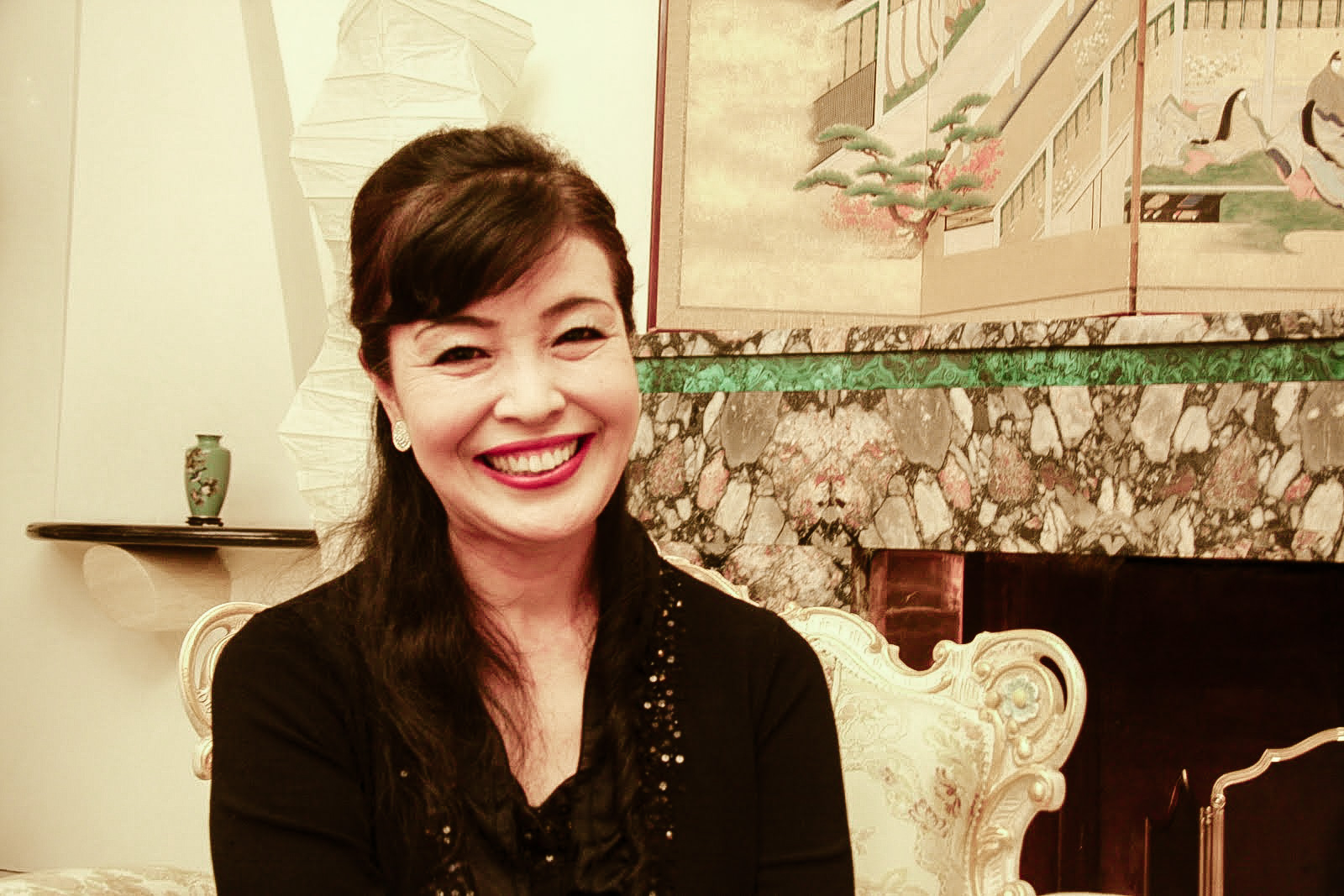
photo credit: romaspettacolo.net
One series is not enough!
Twelve years after the mother series, Riyoko Ikeda decided to publish a 4-episode miniseries entitled Versailles no bara gaiden (The Roses of Versailles - Gothic Stories) whose protagonists are Oscar, Andrè and the little Loulou de La Lorencie, Oscar's niece. The episodes narrated are placed between volumes 7 and 8 of the original manga. In 1987 Eikō no Napoleon-Eroika (栄光のナポレオン-エロイカ, The glorious Napoleon - Heroic) also appeared as the official sequel, whose title "Eroika" refers to the third symphony of Ludwig van Beethoven, dedicated to Napoleon. These 12 volumes narrate the events of Napoleon immediately after the French Revolution: his empire, the Italian campaign, the campaign of Egypt, the battle of the Nile, the coup d'etat of the 18th Brumaire and the French invasion of Russia. in the course of the narration, some of the already known characters will reappear, but only through flashbacks.
In 2006, Riyoko Ikeda decided to take the pencil again to create "Berubara Kids": an amusing reinterpretation in coloured stripes in which the characters of Versailles no Bara reappear in "chibi" version in key scenes. The small parody was published weekly on "Be", a supplement of the newspaper "Asahi Shimbun".

photo credit: pinterest.it
Roses die in beauty
The fascination of Versailles no Bara pushed many musicians to reinterpret the famous "Bara wa utsukushiku chiru" original song of the anime, but Riyoko Ikeda recognized the LAREINE version with license. The first CD came out on October 1, 1998 and in limited number of copies: only 500 with serial number of which the first 4 were owned by the members of the group. Fortunately, in 1998 it was re-edited and Bara wa utsukushiku chiru officially became the fourth single of the band. On February 9th 2000 the most valuable CD edition was released, containing only two audio tracks in which Riyoko Ikeda herself participated as a soprano singer and took care of the graphic design, also designing the costumes of the band for the music video.
Japan Folklore: Setsubun, how to drive away the demons of winter to welcome spring

photo credits: pinterest.it
Traditional Japanese culture has always been characterized by a constant and loving observation of the natural world, its manifestations and its seasonal cycles. Therefore, the attention given to spring, the special moment when nature awakens in all its creatures the necessity of renewal, must not marvel.
This season is celebrated in Japan with the haru matsuri (春祭, spring festival), a set of events whose beginning is marked by the occurrence of Setsubun (節 分). In the traditional Japanese lunisolar calendar, in fact, every change of season is introduced by a day called, indeed, setsubun (literally "division of the seasons"). Spring setsubun, which falls on 3 February, represents the last day of winter and the day before the start of the new season. It marks the transition from "Taikan" (大寒, big cold) to "Risshun" (立春, first day of spring) and is therefore the most favorable moment for a special "cleaning" from winter burdens, which will drive away evil spirits and favor the entrance of the new life-giving energy. This is the meaning of the traditional "demon expulsion" that takes place on this day through different rituals and customs.
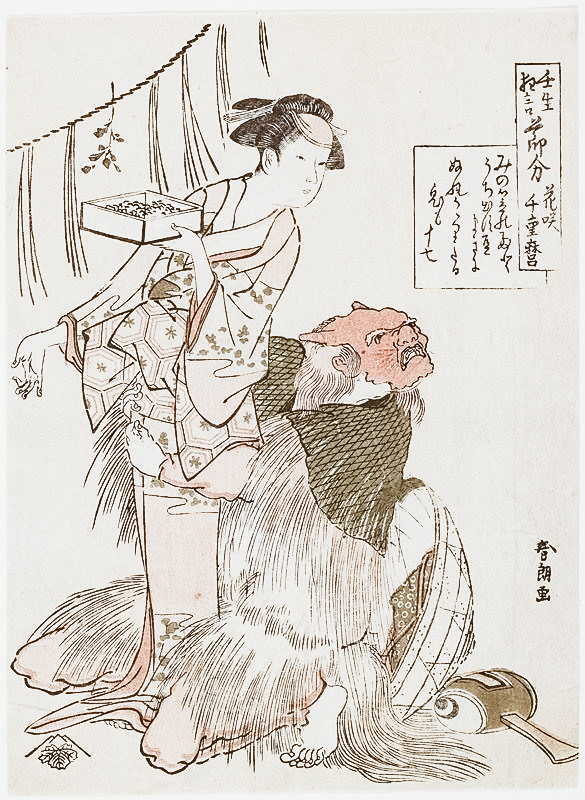
photo credits: pinimg.com
Ancient rituals and family fun
The most famous ritual is undoubtedly the mamemaki (豆 撒 き), which is the launch of soy beans. In the domestic sphere it is entrusted to Toshi Otoko (年 男, man of the year), that is the man of the family of the zodiacal sign of the lunar year entering or in his absence the oldest of the house. He has the task of driving out the harmful spirits and negativities from the house and the new year that is about to start by throwing around irimame (炒 り 豆, toasted soy beans) to the cry of "Oni wa soto! Fuku wa uchi! (鬼は外! 福は内, "Outside the demons! Inside fortune!"). In alternative, he can hurl the beans at another member of the family who plays the part of the demon wearing a mask of oni (Japanese folklore ogres). Subsequently, each member of the family must collect and eat a number of beans corresponding to their age plus one to ensure a year of success and good health (in the popular tradition, in fact, the demons are considered carriers of natural disasters and diseases).
When the oni is expelled, it is necessary to keep the evil spirits away from the house. For this reason it is possible to see in this period of the year some very special amulets, the Hiiragi Iwashi (柊 鰯), exposed at the entrance of the houses. These are holly branches that have the head of a dried sardine skewered on the end, sometimes complemented by pieces of garlic or onion, which have the purpose of keeping demons away, scared by the thorns and the pungent odor emanating from these talismans.
In both cases it is a tradition that has its roots in antiquity. Nowadays it is possible to buy "Setsubun sets" - made of oni masks and roasted beans - in any combini, but in reality the mamemaki custom would have originated in the Muromachi period (1392-1573) and seems to be inspired to an ancient legend, whose plot is still represented in the form of pantomime in the temple of Mibu-dera in Kyoto. Here the kyogen (ancient Japanese theatrical form) titled "Setsubun" is repeated several times during the day and it is said that it is sufficient to watch it to be purified by any negative or evil spirit. Its plot follows the folk tale that tells of an ogre who, in human form, goes one day to visit a widow. Thanks to its magic hammer, the ogre makes a beautiful kimono, which attracts the widow's attention. Eager to take possession not only of the kimono but also of the magic hammer, she decides to get him drunk to be able to steal them both. The ogre, however, aware of the theft, reveals his demonic nature and attacks the woman, who defends herself with the first thing that is within reach: a handful of soy beans. The oni, wounded but again in possession of his goods, flees leaving the widow safe and sound and perhaps a little wiser.

photo credits: toyokeizai.net
Knowing how to look in the right direction
A tradition of more recent origins, born in Osaka but later spread to the rest of the country, is instead linked to the ehōmaki (恵 方 巻, scroll of lucky direction). In this case, to ensure that the good luck is on our side in the year that is about to begin, it is necessary to eat a special sushi roll in a single solution, without interruptions and in silence, facing the lucky direction of the year. The act is less simple than it may seem, considering that the ehōmaki is much more often than a common sushi roll (having to contain seven ingredients to propitiate the seven gods of luck) and is 20 centimeters long. It is not worth eating it cut into pieces, because doing so would also cut luck. To perform the ritual correctly, it is therefore necessary to arm yourself with concentration, determination and a precise compass. For those interested in experimenting with this custom, the most common ingredients to obtain for the filling are cucumber, surimi, salmon, tuna, anago (sea eel), tamagoyaki (Japanese omelette), dried kanpyo strips and seasoned (Japanese pumpkin) and shiitake mushrooms, as well as rice and nori seaweed, while the lucky direction for 2019 is East-North East.
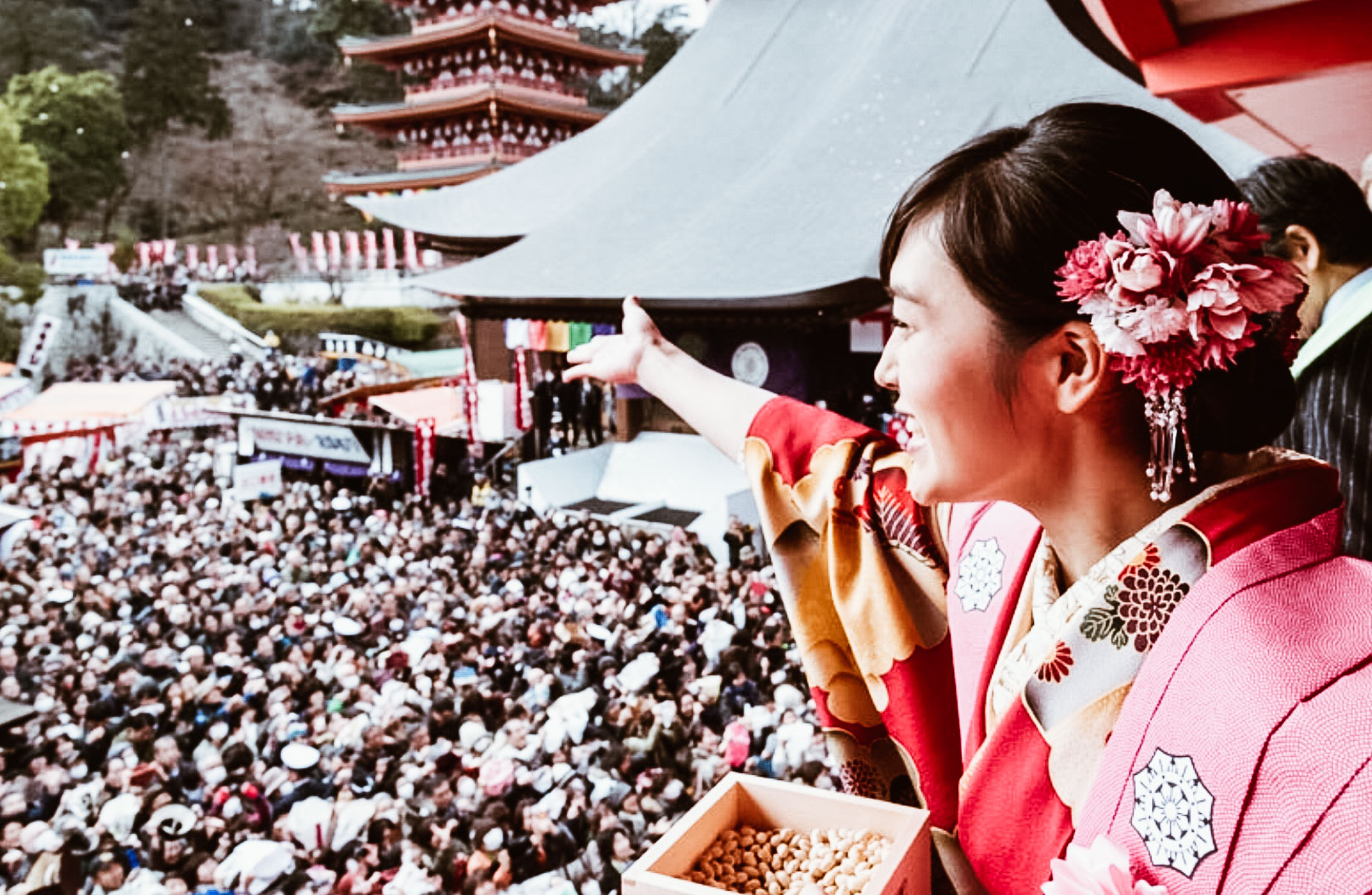
photo credits: shinsenhino.com
Festive temples
The Setsubun can be celebrated in a domestic environment or at least in a private dimension, with relatives and friends, but it is also and above all a recurrence to be lived in community. For example, schools often organize moments of recreation for children, who wear oni masks or have fun chasing adults dressed as demons while hurling beans against them. But it is especially in the temples that it is possible to experience the collective dimension of the party, participating in the events specially created for this day. First of all, of course, the mamemaki, carried out by the monks who throw soy beans from the top of the stages on the crowd gathered for the event. In some temples more shifts are organized for this ritual, reserving some special ones for children, who in addition to the beans receive sweets or small gifts. In addition to the monks, celebrities are often present, such as sports champions, personalities of the entertainment world, actors of the kabuki theater, geisha and maiko, television celebrities, who add a note of attractive glamor to traditional festivities. Among the latter we must remember the theatrical performances, the various purification ceremonies or even the striking archery performances, in which the archers throw their arrows at targets that have demon-like features.
In short, Setsubun is the ideal day for those who wish to live in company a start of the year that helps to renew their energies and for families who have the opportunity to spend a moment of joy together, something that always remains the best talisman against all evil at every latitude.
Japan Traditions: Wakakusa Yamayaki Matsuri
One of Japan's most famous matsuri is the Wakakusa Yamayaki Matsuri held in the city of Nara on the fourth Saturday of January.
photo credits: matsuritracker on flickr
Le Origini
On the top of the third hill of Mount Wakakusa we find the Uguisuzuka Kofun, a keyhole-shaped tombstone.
Legends say that in the past if the mountain was burned by the end of January in the new year, it was possible to repel deaths returning from their graves. On the contrary, if the mountain was not burned by the end of January, a big period of misfortune layed before the city of Nara. As a result, the stories tell that people passing by Mount Wakakusa began to ignite the mountain without permission.

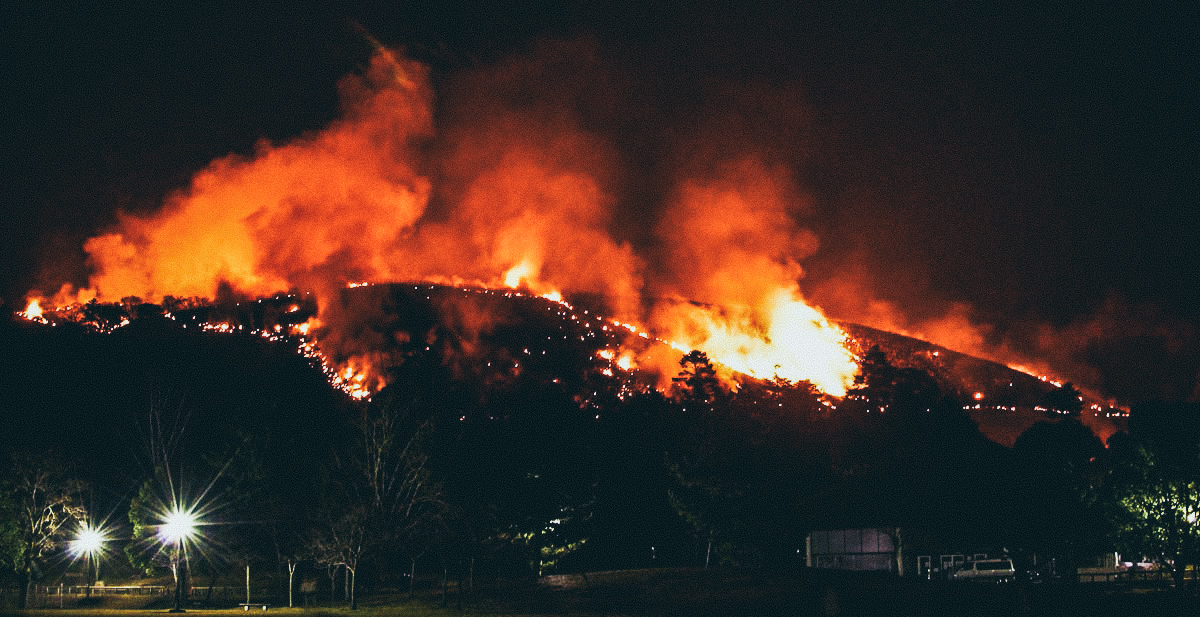
photo credits: smartus & matsuritracker on flickr
Following this, there were some incidents where the fire from Mount Wakakusa came to approach the boundaries of the Todaiji and Kohfukuji temple repeatedly. Because of this, in December 1738, the Nara magistrate's office (Bugyosho) prohibited people from burning the mountain. However, the arson fires continued at the hands of anonymous people and on some occasions approached the nearby cities and temples. To avoid similar dangers, the city of Nara established a rule to allow people to burn the mountain with the participation of representatives of the Todaiji and Kohfukuji temples along with the Nara Bugyosho at the end of the Edo period.

photo credits: toshimo1123 on flickr
The Yamayaki festival (burning mountain) comes from superstitions to calm the spirits of the dead at the Uguisuzuka Kofun located at the top of the mountain, so the Yamayaki could also be considered as a moment of service in memory of the dead.
Modern history and present day
Since 1900, there have been a series of changes related to Wakakusa Yamayaki Matsuri. Firstly, the time was shifted from day to night and even its date moved to 11 February (Day of the Empire), although during the period of World War II, the celebrations were held during the afternoon. Later, in 1910, the organization passed into the hands of the prefecture of Nara.


photo credits: karihaugsdal on flickr
After the end of the war, the Yamayaki once again became an evening event together with a fireworks display of over one hundred fireworks.
During the fifties, the date of the Yamayaki was moved to January 15, the "Coming of Age day", while in 1999, due to the implementation of the so-called "Happy Monday System Act" (law that moved some public holidays on Mondays) , the festival was celebrated on the Sunday before the "Coming of Age day".
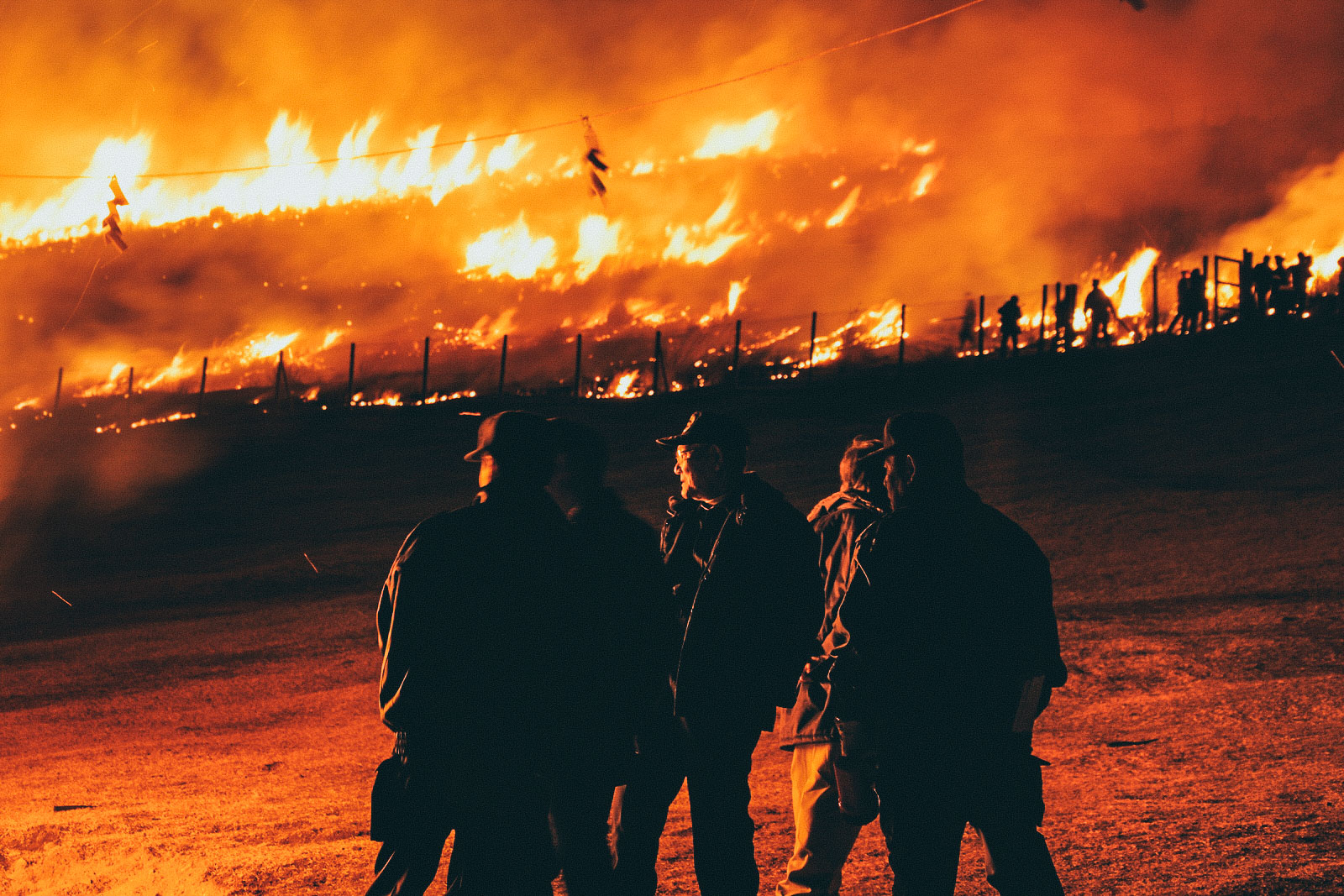

photo credits: toshimo1123 & nwhitely on flickr
Since 2009 we find the combination that still exists today, where the event is held on the fourth Saturday in January with a fireworks display of hundreds of fireworks.
On this matter, this is the only event in Nara that uses the Shakudama fireworks that have a diameter of over 30cm. An absolutely magical fireworks display that we guarantee will always remain engraved in your memories.
Mount Wakakusa
Mount Wakakusa is 342 meters high and 33 hectares wide and is covered with grass with delicate slopes. Here you can see deers, seasonal flowers and plants, like the traditional Japanese cherry trees in spring and the fantastic autumn colors typical of Japan. Also from its top, it is possible to see the whole panorama of the city of Nara with all its historical part.

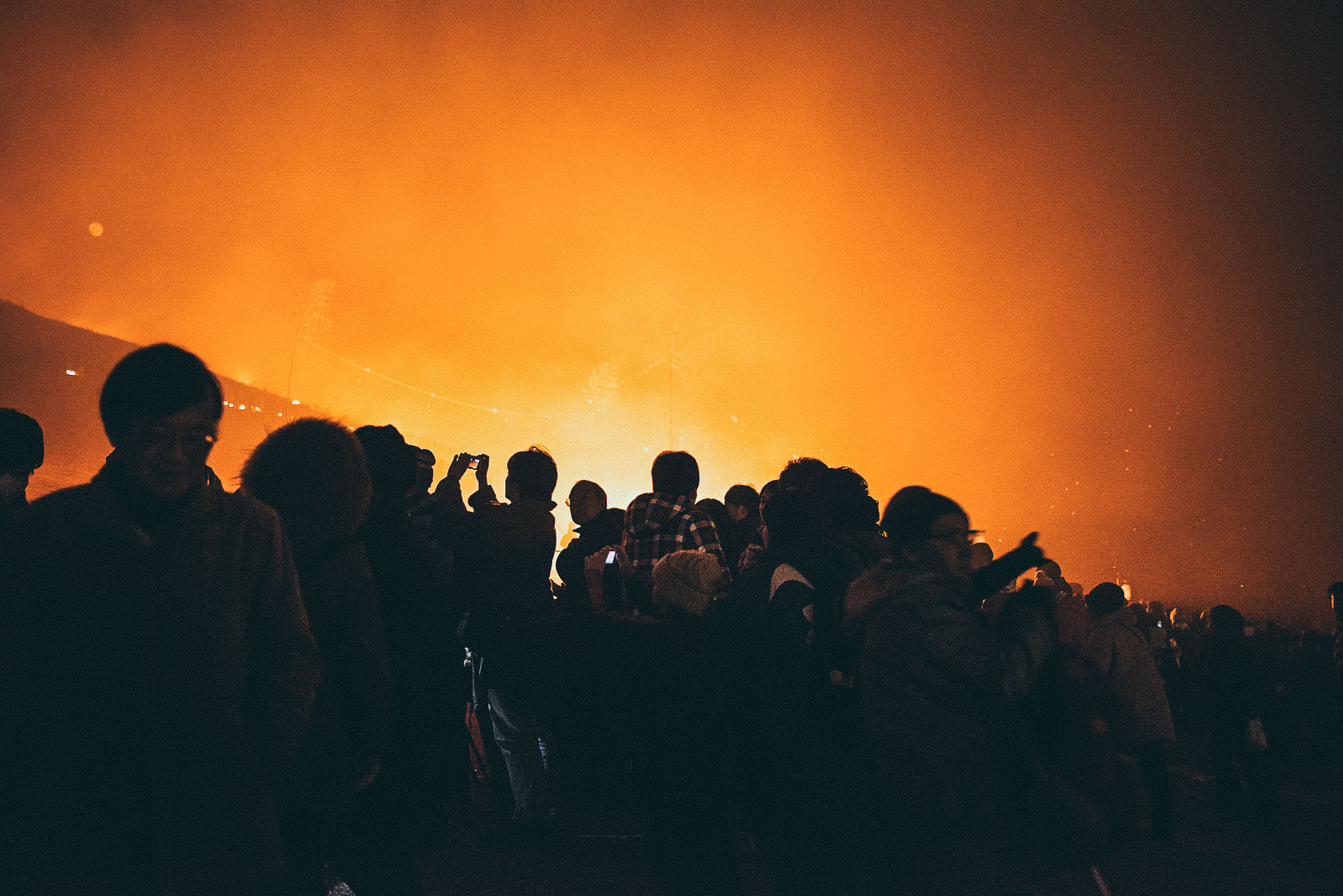
photo credits: 158175735@N03 & mashipooh on flickr
Mount Wakakusa is surrounded by many UNESCO world heritage sites such as the temples Todaiji and Kohfukuji and the spring forest of Mount Kasuga, so be very careful to avoid accidents such as spreading the fire.
The parade
Led by the sound of shell horns played by the mountain priests of the Kinpusenji Temple, more than 40 people face the solemn parade through the park, wearing the traditional costumes of the representatives of the temples of Kasugataisha, Todaiji and Kohfukuji and of the officers of the judiciary office of Nara in the Edo period.
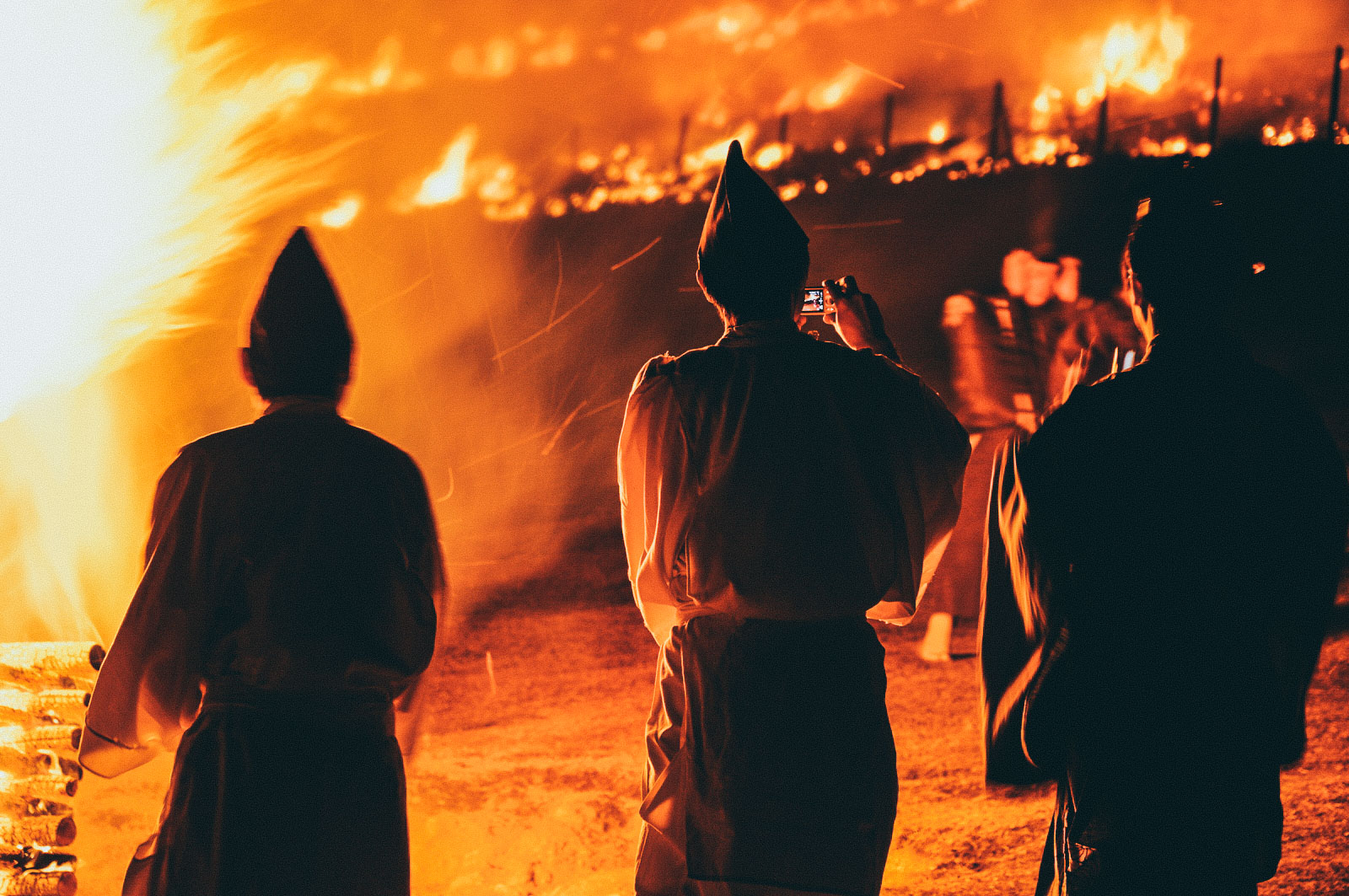
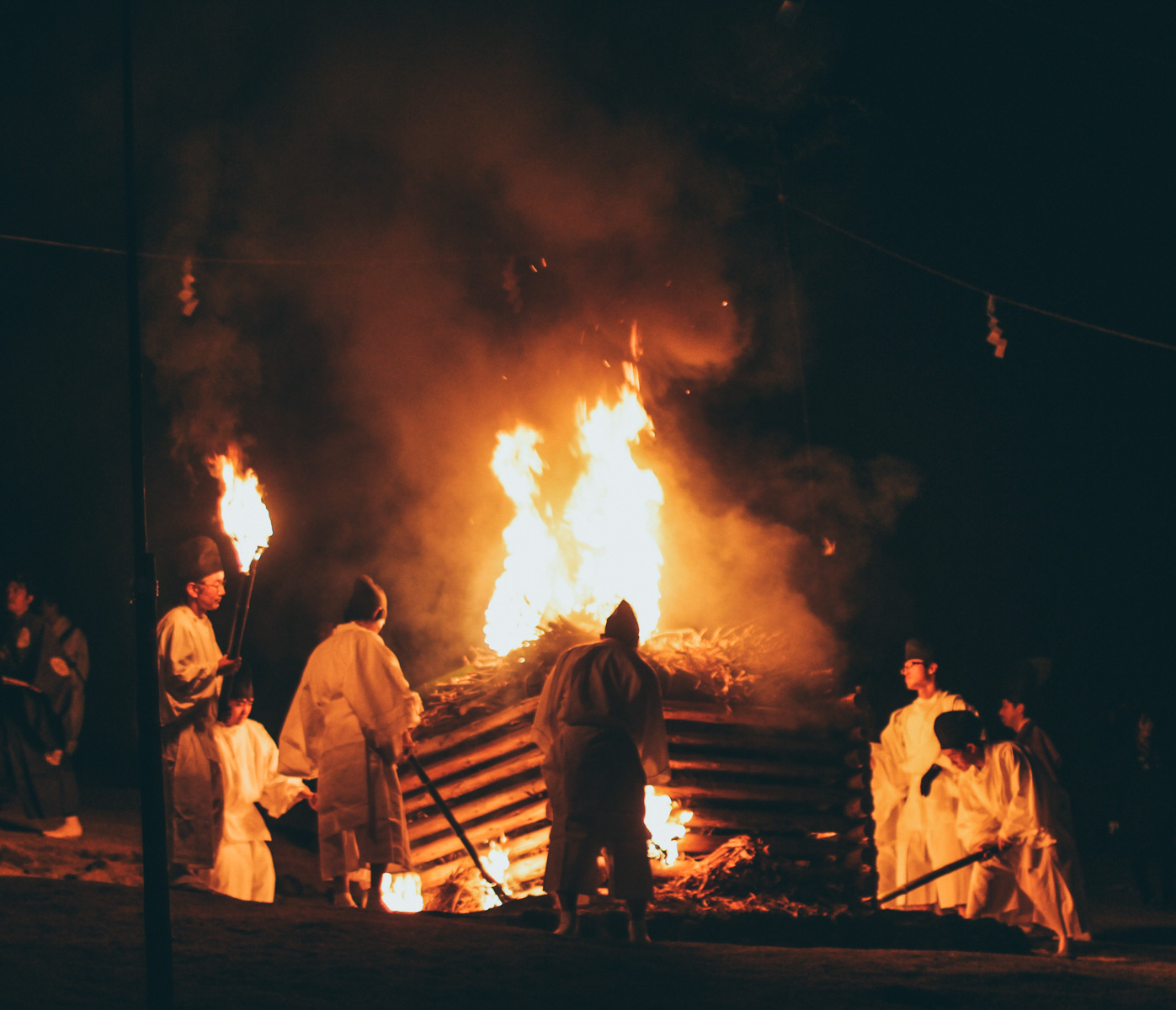
photo credits: toshimo1123 & katiefujiapple on flickr
The event begins with the Gojinkahotaisai, the sacred fire acceptance ceremony held at the Tobohino park, on the site of the Great Round Bonfire. In this ceremony, the sacred fire is transferred from the Great Round Bonfire to the torches. Following this, the parade will take the sacred fire to the Nogami temple. Once arrived at the Mizuya temple, the sacred fire brought by time Kasugataisha will be transferred to a series of torches. Once at the Nogami Temple, at the base of Mount Wakakusa, the sacred fire forms another great bonfire.

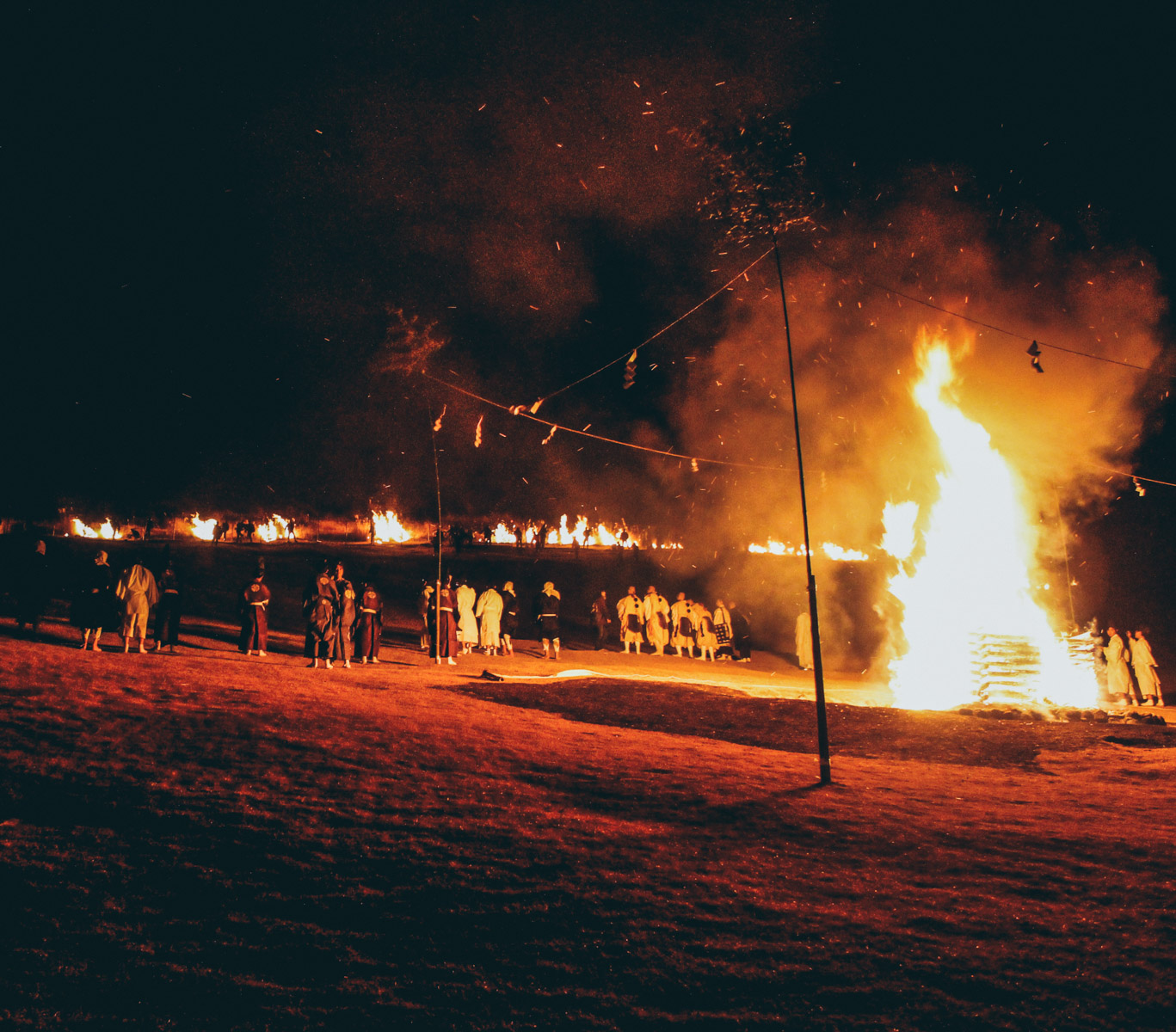
photo credits: katiefujiapple on flickr
During the parade, the fire is accompanied by constant prayers in the first place for the safety of the Yamayaki. The fire is then transferred back to the torches, accompanied by the songs of the priests of the temples Todaji, Kohfukuji and Kinpusenji. At this point, the parade moves towards the big bonfire in the center at the base of the mountain where it is lit, thus giving birth to the spectacle of light and heat.
photo credits: nara-park.com
Access
Mount Wakakusa is about a 10 - 15 minute walk from the Todaiji temple and Kasuga Taisha. The mountain can also be reached on foot from Kintetsu Nara station in about 35 minutes or from JR Nara station in about 50 minutes. Alternatively, you can use buses departing from both the station and Kasuga Taisha for a small fee.
If you are in Japan during this period, the next Yamamaki will take place in a few days, January 26, 2019. Do not miss it and we’ll wait for your stories!

photo credits: ks_photograph
Japan History: Hasekura Tsunenaga

photo credits: wikimedia.org
Tsunenaga Rokuemon Hasekura (1571 - 7 August 1622) was a Japanese samurai and servant of Date Masamune, the daimyo of Sendai, famous for having led numerous delegations of ambassadors that led him to travel the whole world.
He led a delegation of ambassadors in Mexico and later in Europe between 1613 and 1620, after which he returned to Japan. He was the first Japanese officer sent to America and the first to establish relations between France and Japan.
The Spaniards began their travels between Mexico ("New Spain") and China, through their territorial base in the Philippines, following the journeys of Andrés de Urdaneta in the sixteenth century. Manila became their definitive base for the Asian region in 1571.
Contacts with Japan began due to the continuous shipwrecks on the Japanese coast, at which point the Spaniards began to hope to expand the Christian faith in Japan. The attempts to expand their influence in Japan met strong resistance from the Jesuits, who had begun the evangelization of the country in 1549, as well as the Portuguese and the Dutch who did not wish to see Spain trade with the Japanese.
In 1609 the Spanish galleon San Francisco shipwrecked on the Japanese coast at Chiba due to bad weather on its way from Manila to Acapulco. The sailors were rescued, and the captain of the ship, Rodrigo de Vivero y Aberrucia, met Tokugawa Ieyasu.
A treaty under which the Spaniards could build an industry in the east of Japan was signed on November 29 1609, so that Spanish ships would be allowed to visit Japan if necessary.
The embassy project
Luis Sotelo, a Franciscan friar who was proselytizing in the Tokyo area, persuaded the Shōgun to send him as ambassador to Nueva España (Mexico). In 1610 he sailed to Mexico with the Spanish and 22 Japanese sailors aboard the San Buena Ventura, a ship built by the Englishman William Adams for the Shogun. Once in New Spain, Luis Sotelo met the Viceroy Luis de Velasco, who agreed to send an ambassador to Japan, in the person of the famous explorer Sebastián Vizcaíno, with the mission to explore the "Gold and Silver Islands" that were thought to be east of the Japanese islands.
Vizcaíno arrived in Japan in 1611 and had many meetings with the Shogun and the feudal lords, but he was not very respectful of Japanese customs, and he found the Japanese to be against Catholic proselytism. Vizcaíno eventually set off in search of the "Silver Island", during which he encountered bad weather, which forced him to return to Japan with serious damage. The Shogun decided to build a galleon in Japan, in order to bring Vizcaíno back to New Spain.
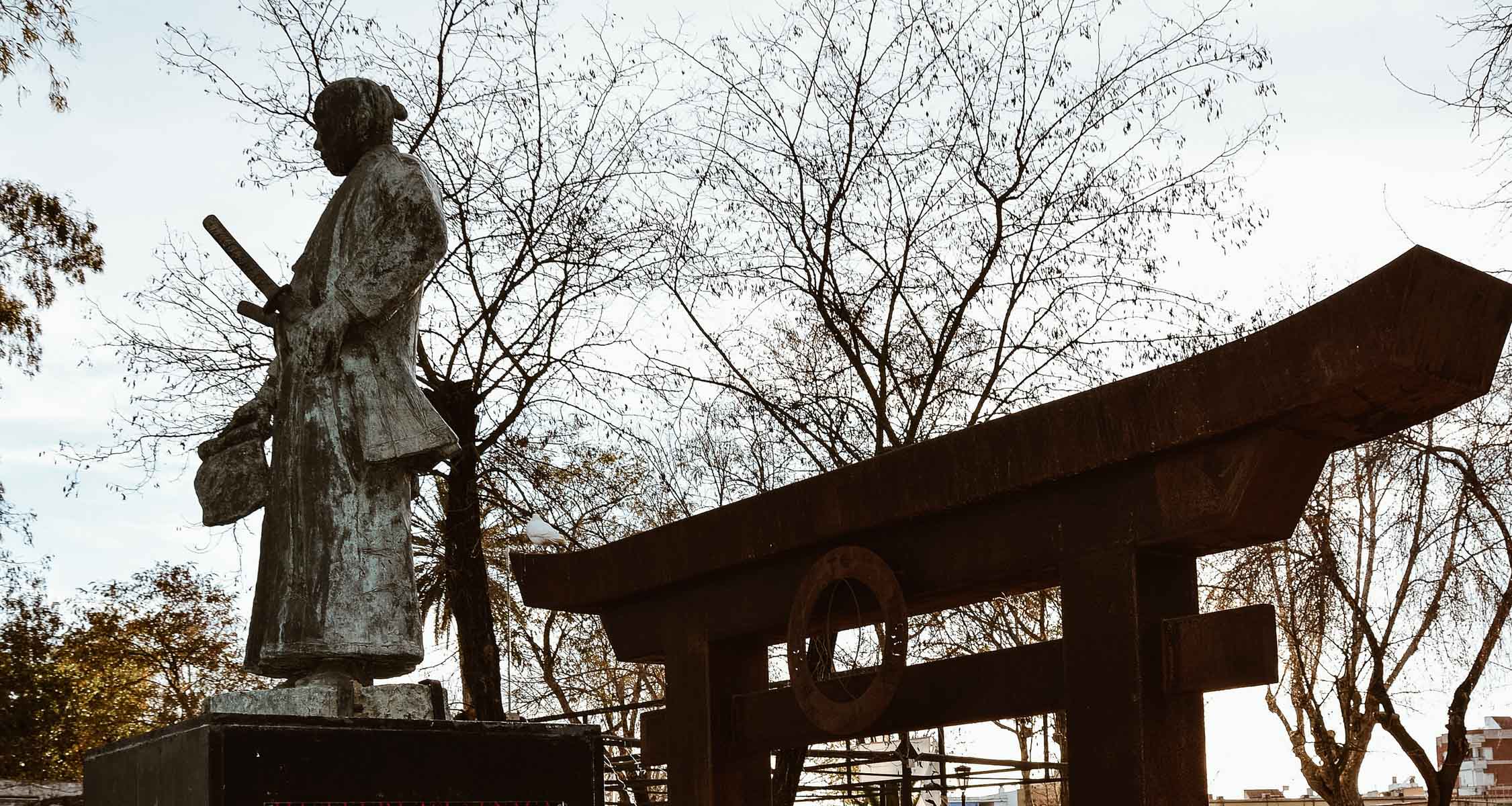
Statue of Hasekura Tsunenaga in Coria del Río
photo credits: tradurreilgiappone.com
Date Masamune was head of the mission and Hasekura Tsunenaga was appointed one of his attendants. Date Maru was called by the Japanese to build the galleon and later he was joined by San Juan Bautista, called by the Spaniards. With the participation of technical experts from the Bakufu, 800 naval workers, 700 blacksmiths, and 3,000 carpenters it took 45 days to build the whole ship.
After its completion, the ship sailed on 28 October 1613 from Ishinomaki to Acapulco in Mexico, with about 180 crew members, including 10 Shogun samurai, 12 samurai from Sendai, 120 between merchants, sailors and Japanese servants.
The ship arrived in Acapulco on 25 January 1614 after three months of navigation, and a ceremony welcomed the delegation. Before the trip to Europe, the delegation spent time in Mexico, visiting Veracruz and then embarking on the fleet of Don Antonio Oquendo. The emissaries left for Europe on the San Jose on 10 June, and Hasekura had to leave most of the group of Asian merchants and sailors in Acapulco.
The fleet arrived in Sanlúcar de Barrameda on October 5, 1614.
The Japanese embassy met the Spanish king Philip III in Madrid on January 30, 1615. Hasekura handed over a letter from Date Masamune to the sovereign and the offer for a treaty. The king replied that he would do what was in his power to meet the demands.
On February 17, Hasekura was baptized by the king's personal chaplain and renamed Felipe Francisco Hasekura.
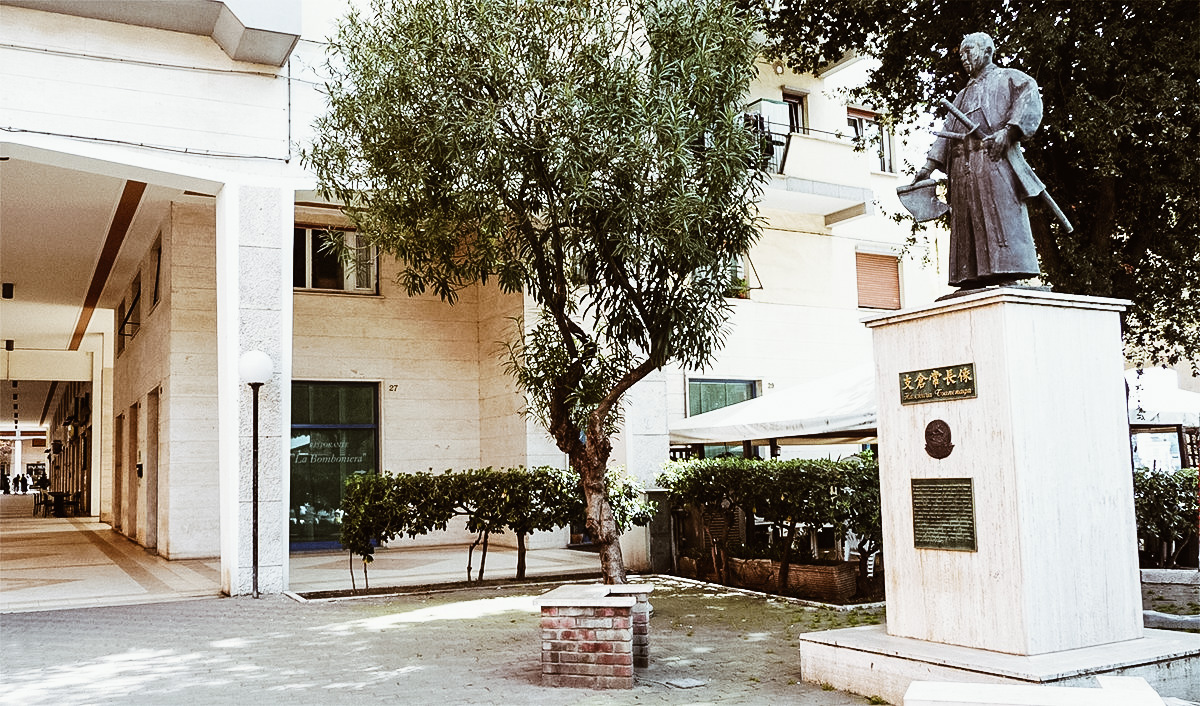
Statue of Hasekura Tsunenaga in Civitavecchia
photo credits: tradurreilgiappone.com
France
After travelling through Spain, the delegation sailed into the Mediterranean Sea aboard three Spanish frigates to Italy. Because of the bad weather, the ships was forced to stay in the French bay of Saint Tropez, where they were received by the local nobility, with amazement from the population.
The visit of the Japanese people is recorded in the chronicles of the area as a delegation led by "Filippo Francesco Faxicura, Ambassador to the Pope, from Date Masamune, King of Woxu in Japan".
Many picturesque details of their behaviour and appearance were remembered:
"They never touch the food with their hands, but they use two thin sticks holding three fingers".
"They blow their noses in soft silky sheets of the size of a hand, which they never use twice, and then throw them on the ground after use, and were delighted to see that the people around them rushed to pick them up."
"Their swords cut so well that they can cut a thin sheet of paper by resting it on the edge and blowing on it."
("Reports of Mme de St Tropez", October 1615, Bibliothèque Inguimbertine, Carpentras).
The visit of Hasekura Tsunenaga to Saint Tropez in 1615 is the first documented example of relations between France and Japan.
Italy
The Japanese delegation arrived in Italy, succeeding in obtaining an audience with Pope Paul V in Rome, in November 1615, disembarking in the port of Civitavecchia, reason why even today Civitavecchia is twinned with the Japanese city of Ishinomaki. Hasekura handed the Pope a letter decorated with gold, with a formal request for a commercial treaty between Japan and Mexico, as well as sending Christian missionaries to Japan. The Pope accepted without delay to dispatch the sending of missionaries but left the decision of a commercial treaty to the King of Spain. The Pope then wrote a letter to Date Masamune, of which a copy is still preserved in the Vatican. The Senate of Rome gave Hasekura the honorary title of Roman Citizen, in a document which he later brought to Japan and which is still visible today and preserved in Sendai. In 1616, the French publisher Abraham Savgrain published an account of Hasekura's visit to Rome: "Récit de l'entrée solemnelle et remarquable faite à Rome, par Dom Philippe Francois Faxicura" ("Tale of the solemn and remarkable entry made in Rome by Don Filippo Francesco Faxicura ").

Conferral of honorary Roman citizenship to "Hasekura Rokuemon"
photo credits: wikimedia.org
Second visit to Spain
For the second time in Spain, Hasekura met the king, who declined the offer of a commercial treaty, because he thought that the Japanese people did not seem an official delegation of the sovereign of Japan, Tokugawa Ieyasu. He, on the contrary, had promulgated an edict in January 1614 ordering the expulsion of all the missionaries from Japan and had begun the persecution of the Christian faith in the country. The delegation left Seville for Mexico in June 1616 after a two-year period in Europe. Some of the Japanese remained in Spain, more precisely in a village near Seville (Coria del Río), and their descendants still have the surname Japón.
Return to Japan
In April 1618 the San Juan Bautista arrived in the Philippines from Mexico, with Hasekura and Luis Sotelo on board. The ship was bought by the Spanish government, with the aim of building defences against the Dutch. Hasekura returned to Japan in August 1620 and found the nation very changed: the persecution of Christians in the effort to eradicate Christianity had been active since 1614, and Japan was moving towards the "Sakoku" period, characterized by overwhelming isolationism. Because of these persecutions, the trade agreements with Mexico that he had tried to establish were denied, and much of the effort in this direction had been in vain.
It seems that the embassy he represented has had few results, but has instead accelerated Shogun Tokugawa Hidetada's decision to cancel trade relations with Spain in 1623 and diplomatic relations in 1624.
What happened to Hasekura after the diplomatic adventure is unknown, and the stories about his last years are numerous. Some argue that he abandoned Christianity, others said he defended his faith so deeply as to become a martyr, and others said he remained a Christian in intimacy, professing his faith in secret. Hasekura died in 1622, and his tomb is still visible today in the Buddhist temple of Enfukuji in the prefecture of Miyagi.
In 2015, was the 400th anniversary of the arrival of Keichō Kenō Shisetsudan, the first official delegation from Japan. A procession was held in historical costume in the main street of Civitavecchia for a historical re-enactment of the entrance to the city of the delegation led by a Hasekura Tsunenaga. In the evening, a concert was organized by local choral musicians at the Church of the Holy Japanese Martyrs. This event was also attended by Civitavecchia Mayor Antonio Cozzolino, Deputy Director of the Bureau of Reconstruction Policies of the city of Ishinomaki, Junichi Kondō, the Ambassador of Japan Kazuyoshi Umemoto and Consorte and citizens of both cities.

The delegation of Japan landing in Italy
photo credits: it.emb-japan.go.jp
Japan Travel: The imperial Palace & Gardens

photo credit: Google Images
I’ve been to Tokyo a few times now and one of my favourite spot in the whole city are the Imperial East Gardens in the Chiyoda area. Whenever I’m in the city, I always find a moment (sometimes even more than one) to visit this amazing place, a green heart in Tokyo, full of history and tradition but surrounded by the modernity of this frantic city.
The Tokyo Imperial Palace (皇居 Kōkyo, literally "Imperial Residence") is the primary residence of the Emperor of Japan. With its large parks it is located in the heart of the Chiyoda ward and contains buildings including the main palace (宮殿 Kyūden), the private residences of the Imperial Family, an archive, museums and administrative offices.
The current palace is built on the site of the old Edo Castle built by the shogun Tokugawa Ieyasu and the total area including the gardens is 1.15 square kilometres.
The history
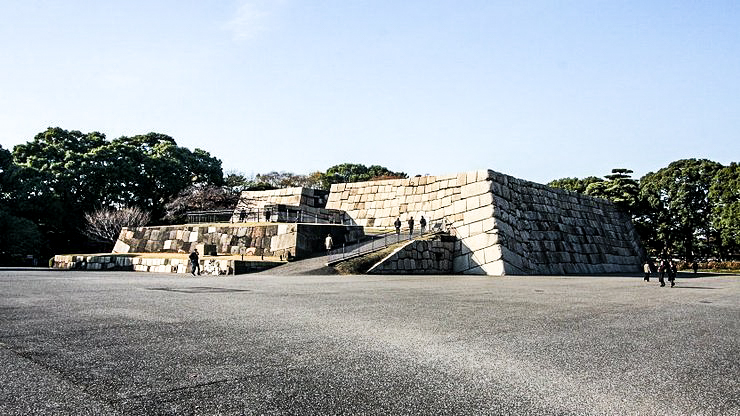

photo credit: japan-guide.com
Edo castle
Built by Tokugawa Ieyasu and assigned it to be the residence of the Tokugawa family, after the end of the shogunate and the Meiji Restoration, the Emperor left the Kyoto Imperial palace and moved to Edo Castle. This became his new residence and it was renamed to Tōkei Castle (東京城 Tōkei-jō), at this time, Tōkyō had also been called Tōkei.
On 5th May 1873, the Nishinomaru Palace (formerly the shōgun's residence) was destroyed by a fire, and the new imperial Palace Castle (宮城 Kyūjō) was constructed on the site in 1888.
The non-profit organisation "Rebuilding Edo-jo Association" (NPO法人 江戸城再建) founded in 2004 has the aim of a historically correct reconstruction of at least the main donjon. This group plans to collect donations and signatures on a petition in support of rebuilding the tower of the old castle so that the capital city can have a symbolic building.


photo credit: Wikipedia, thetraveltester.com
The Old palace
In the Meiji era, most structures from the Edo Castle disappeared. Some were cleared to make way for other buildings while others were destroyed by earthquakes and fire.
In this case, the wooden double bridges (二重橋 Nijūbashi) over the moat were replaced with stone and iron bridges while the buildings of the Imperial Palace constructed in the Meiji era were made of wood.
When you first face the Imperial Palace you are suddenly transported into the classical and traditional Japanese architecture, but if you have the chance to walk those halls you’ll discover that on the inside, the palace is a mixture of then-fashionable Japanese and European elements. Western chairs, tables and heavy curtains furnish the spaces, the floors of the public rooms have parquets or carpets while the residential spaces us traditional tatami mats.
Guests were received in the main audience hall, which was the central part of the palace. Its floor space was more than 223 tsubo (approximately 737.25 m2 - 7,935.7 sq ft) and the interior the ceiling was in traditional Japanese-Style, while the floor was made out of parquet. For the roof, a style similar to the Kyoto Imperial Palace was maintained, however it was covered with fireproof coppered plates rather than the traditional Japanese cypress shingles.
More concrete buildings were added in the late Taishō and early Shōwa period, such as the headquarters of the Imperial Household Ministry and the Privy Council.
During the Second World War, on the night of 25th May 1945, most structures of the Imperial Palace were destroyed in the Allied firebombing raid on Tokyo. Due to this, a new main palace hall (宮殿 Kyūden) and residences were constructed on the western portion of the site in the 1960s and this area was renamed Imperial Residence (皇居 Kōkyo) while the eastern part was renamed East Garden (東御苑 Higashi-Gyoen) and became a public park in 1968.
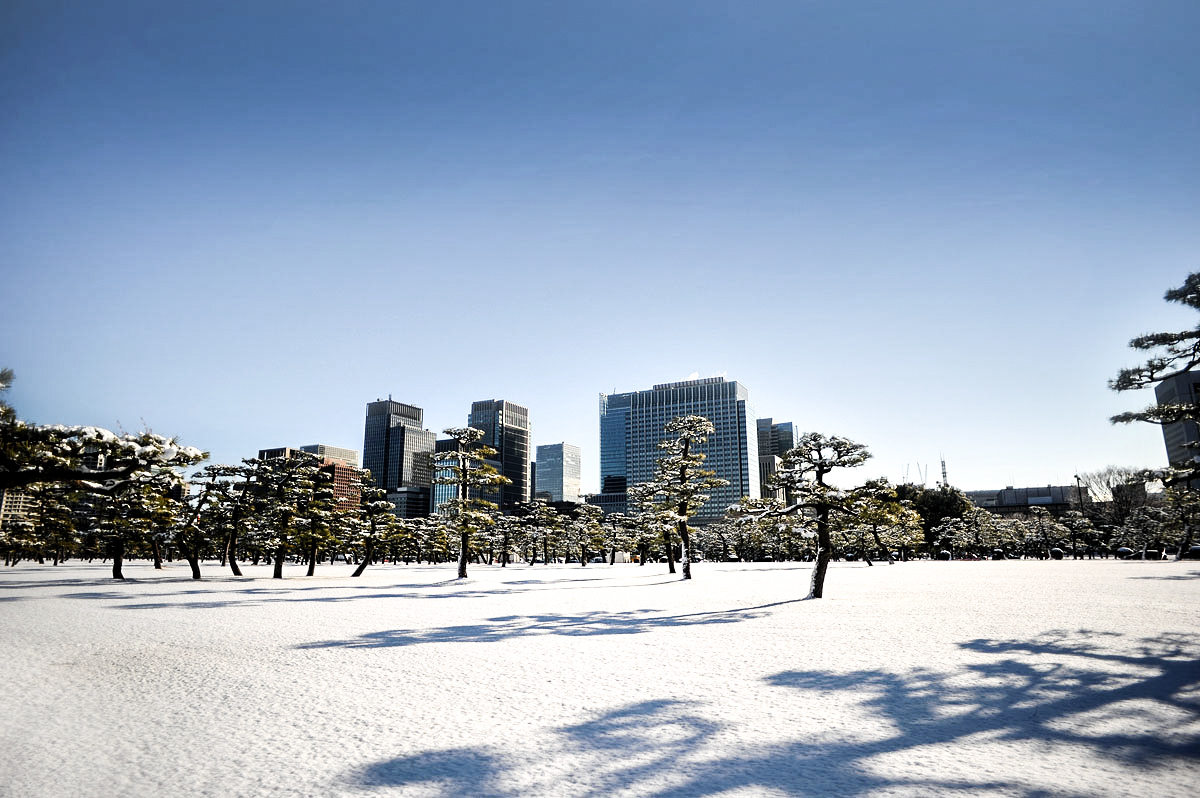
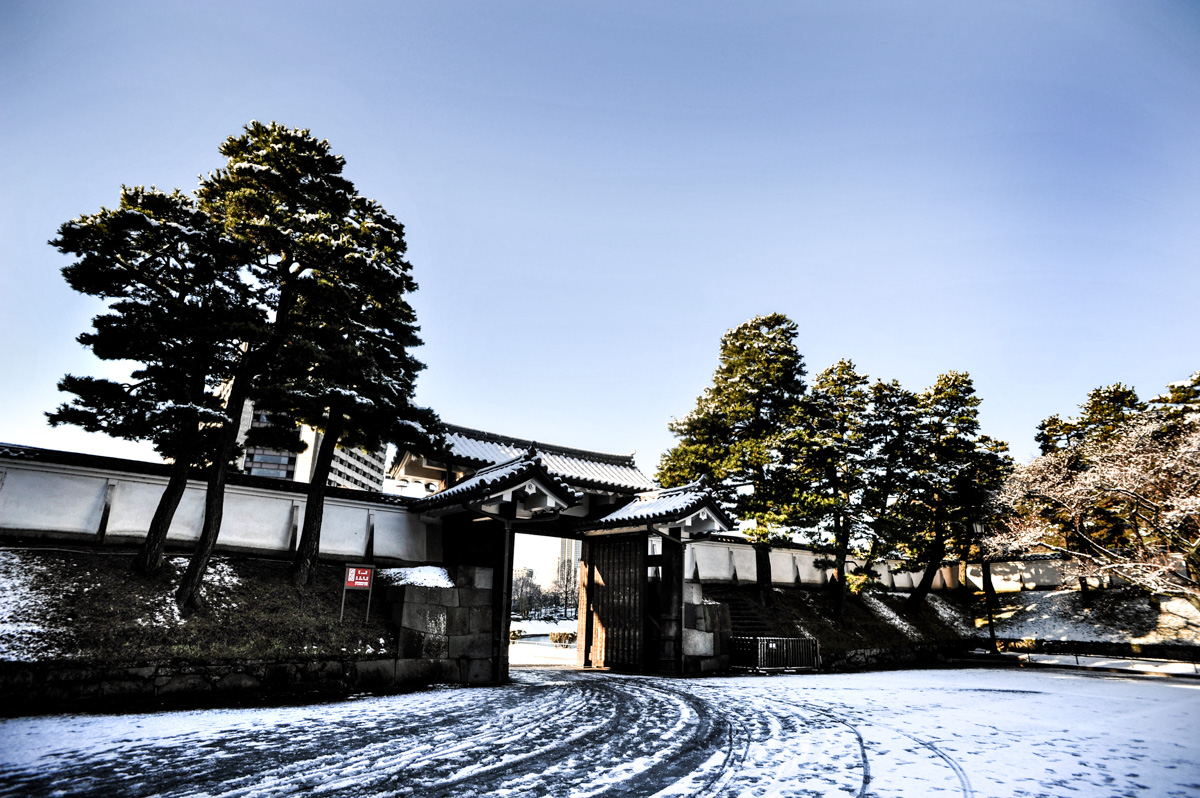
photo credit: tokyobling.wordpress.com
The Imperial Palace today
After surviving defining moment in history, the modern palace Kyūden (宮殿) was designed for various imperial court functions and reception is located in the old Nishinomaru section of the palace grounds.
As of today, the residence of the current Emperor and empress is located in the Fukiage Gardens and it is now on a much more modest scale, compared to what originally was.
Except for Imperial Household Agency and the East Gardens, the palace is generally closed to the public, except for reserved guided tours from Tuesdays to Saturdays. Each New Year (January 2) and Emperor's Birthday, the public is permitted to enter through the Nakamon (inner gate) where they gather in the Kyuden Totei Plaza in front of the Chowaden Hall. On this occasion, the Imperial Family appears on the balcony before the crowd and the Emperor normally gives a short speech greeting and thanking the visitors and wishing them good health and blessings.
The Gardens
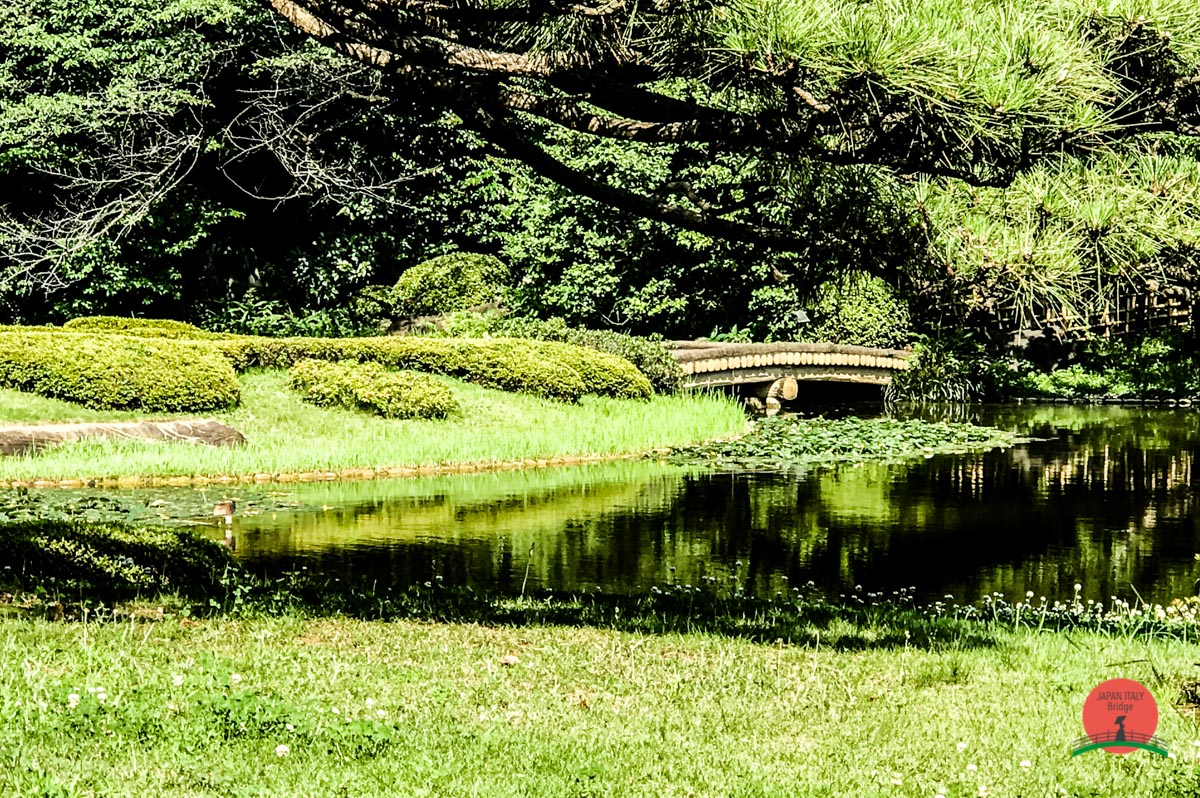

Fukiage Garden
This is probably the oldest garden of the complex. The Fukiage Garden has carried the name since the Edo period and this is where the Imperial Family lives today.
The Fukiage Ōmiya Palace (吹上大宮御所 Fukiage Ōmiya-gosho) in the northern section was originally the residence of Emperor Showa and Empress Kōjun and was called the Fukiage Palace. After the Emperor's death in 1989, the palace was renamed the Fukiage Ōmiya Palace and was the residence of the Empress Dowager until her death in 2000.
Here you can also find the Three Palace Sanctuaries (宮中三殿 Kyūchū-sanden), parts of the Imperial Regalia of Japan and the sanctuary plays a religious role in imperial enthronements and weddings.


photo credit: Wikipedia
Tōkagakudō (Music Hall)
The Tōkagakudō (桃華楽堂, Peach Blossom Music Hall) is located to the east of the former main donjon of Edo Castle in the Honmaru and it was built was built in commemoration of the 60th birthday of Empress Kōjun on 6 March 1963. The ferro-concrete building covers a total area of 1,254 m2 (13,500 sq ft) and each of its eight outer walls is decorated with differently designed mosaic tiles.
Ninomaru Garden
If you want to have a quick look of the whole Japan vegetation, this is where you should be since symbolic trees representing each prefecture are planted in the northwestern corner of Ninomaru enceinte. Such trees have been donated from each prefecture and there are total of 260, covering 30 varieties.

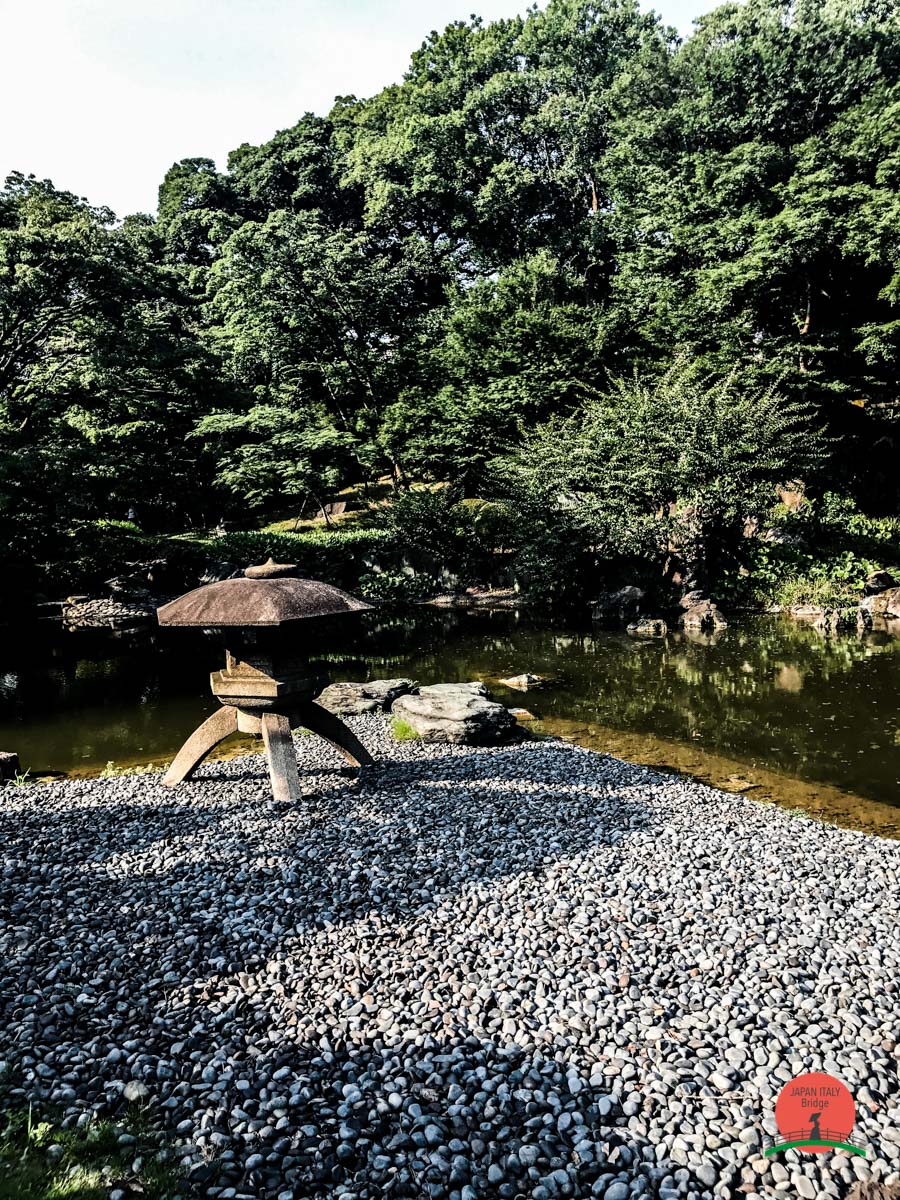
Kitanomaru
Located in the northern part of the enceinte of Edo Castle, this public park is famous for being the house of the Nippon Budokan Hall, one of the biggest sites for concerts, sports event and more.
Here you can also find a bronze monument dedicated to Prince Kitashirakawa Yoshihisa (北白川宮能久親王 Kitashirakawa-no-miya Yoshihisa-shinnō).
East Garden
And last but not least, the East Gardens the most famous of this whole complex. This is where most of the administrative buildings for the palace are located and encompasses the former Honmaru and Ninomaru areas of Edo Castle, a total of 210,000 m2 (2,300,000 sq ft). Located on the grounds of the East Garden is the Imperial Tokagakudo Music Hall, the Music Department of the Board of Ceremonies of the Imperial Household, the Archives and Mausolea Department Imperial Household Agency, structures for the guards such as the Saineikan dojo, and the Museum of the Imperial Collections.
Construction work began in 1961 with a new pond in the Ninomaru, as well as the repair and restoration of various keeps and structures from the Edo period. On 30 May 1963, the area was declared by the Japanese government a "Special Historic Relic" under the Cultural Properties Protection Law.


This is actually my personal favourite and whenever I come to Tokyo, I always try to spend one afternoon here. It’s one of the most visited landmarks of the city, that’s true, but in spite of all the tourists walking around, there is this magical atmosphere of tranquillity in the air and it’s the perfect spot to just sit, read a book, write on your notebook all the adventures you’ve had in this amazing city and just take in all the history this place has seen.
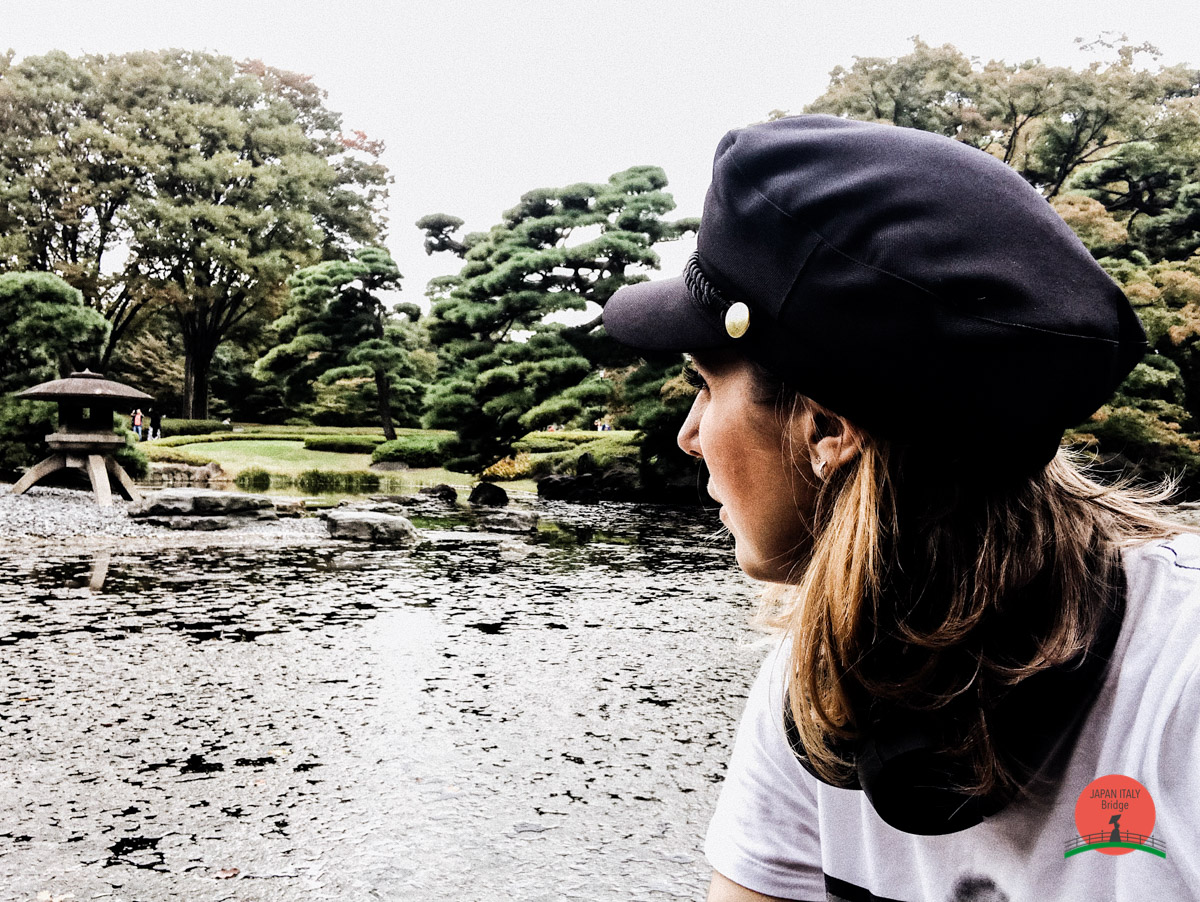
Access
The Otemon entrance to the East Gardens is a short walk from Otemachi Station on the Chiyoda, Tozai, Marunouchi, Hanzomon and Mita Subway Lines. It can also be reached in a 10-15 minute walk from Tokyo Station.
Opening Hours
9:00 to 16:30 (until 17:00 from mid April through August; until 16:00 from November through February). Admission ends 30 minutes before closing.
Closed
Mondays, Fridays, New Year (Dec 28 to Jan 3) and some special occasions. If Monday or Friday is a national holiday, the gardens are closed on the following day instead.
Admission
Free
Japan History: Tokugawa Ieyasu
 Photo credits: wikipedia.org
Photo credits: wikipedia.org
Tokugawa Ieyasu (徳川家康, Jan. 30, 1543 - June 1, 1616) was the founder and first shōgun of the Tokugawa shogunate, who effectively commanded the Battle of Sekigahara in Japan in the 1600s until the reconstruction of Meiji in 1868. Ieyasu obtained power in 1600, became shōgun in 1603, and abdicated in 1605 remaining in power until his death in 1616. He was one of the three unifiers of Japan, along with Lord Nobunaga and Toyotomi Hideyoshi.
Tokugawa Ieyasu, originally Matsudaira Takechiyo, was the son of Maytsudaira Hirotada, the daimyo of Mikawa of the Matsudaira clan and of Odai-no-kata, the daughter of the samurai lord Mizuno Tadamasa. His parents were 17 and 15 years old when Ieyasu was born.
In the year of his birth, the Matsudaira clan broke up. In 1543, Hirotada's uncle, Matsudaira Nobutaka, defeated the can Oda. This gave Oda Nobuhide a way to attack Okazaki. Hirotada divorced from Odai-no-kata by sending her back to his family to remarry again, in fact Ieyasu had 11 brothers and sisters.
As Oda Nobunaga continued to attack Okazaki, Hirotada in 1548 asked for help from Imagawa Yoshimoto who accepted the alliance.
Oda Nobuhide, having learned of this agreement, had Ieyasu kidnapped by his entourage on his way to Sunpu. Ieyasu was only five years old at the time.
Nobuhide threatened to execute Ieyasu unless his father broke all ties with the Imagawa clan. However, Hirotada refused, stating that sacrificing his son would show his seriousness in his pact with Imagawa. Despite this refusal, Nobuhide chose not to kill Ieyasu, but instead held him hostage for the next three years in the Manshoji Temple of Nagoya.
In 1549, when Ieyasu was 6 years old, his father Hirotada was assassinated by his own vassals, who had been corrupted by the Oda clan. Around the same time, Oda Nobuhide died during an epidemic. The death of Nobuhide has dealt a blow to the Oda clan. An army under the command of Imagawa Sessai besieged the castle where Oda Nobuhiro, the eldest son of Nobuhide and the new head of the Oda clan lived. With the castle about to fall, Sessai offered an agreement to Oda Nobunaga, the second son of Nobuhide. He offered to renounce the siege if Ieyasu had been delivered to Imagawa.

Photo credits: Rekishinotabi on flickr
The ascent to power (1556-1584)
In 1556 Ieyasu officially became an adult, with Imagawa Yoshimoto presiding over his genpuku ceremony. Following the tradition, he changed his name from Matsudaira Takechiyo to Matsudaira Jirōsaburō Motonobu. He was also allowed for a brief period to visit Okazaki to pay homage to his father's grave and to receive the homage of his nominal servants, guided by the karō Torii Tadayoshi.
A year later, he married his first wife, Lady Tsukiyama, a relative of Imagawa Yoshimoto, and changed his name to Matsudaira Kurandonosuke Motoyasu again. When he was allowed to return to Mikawa, Imagawa then ordered him to fight the Oda clan in a series of battles.
Motoyasu fought his first battle in 1558 at the Siege of Terabe. Terabe's castellan in western Mikawa, Suzuki Shigeteru, betrayed Imagawa by defeating Oda Nobunaga. This was within the territory of Matsudaira, so Imagawa Yoshimoto entrusted the campaign to Ieyasu and his servants of Okazaki. Ieyasu led the attack in person, but after taking external defenses, he began to be afraid of a counterattack, so he retired. As anticipated, the Oda forces attacked its lines, but Motoyasu was prepared and drove out the Oda army.
He managed to deliver supplies to the siege of Odaka in 1559. Odaka was the only one of the five frontier forts challenged by the Oda clan attack, nevertheless it remained in the hands of Imagawa. Motoyasu launched diversions against the two strong neighbors, and when the garrisons of the other forts came to his aid, Ieyasu's supply column managed to reach Odaka.
In 1560 the leadership of the Oda clan had passed to the brilliant leader Oda Nobunaga. Imagawa Yoshimoto, head of a large army (perhaps 25,000 people) invaded the territory of the Oda clan and Motoyasu was assigned a separate mission to capture the stronghold of Marune. So he and his men were not present at the Battle of Okehazama where Yoshimoto was killed in Nobunaga's surprise assault.
The Alliance with Oda
With the death of Yoshimoto and the Imagawa clan in a state of confusion, Motoyasu took the opportunity to assert his independence and bring his men back to the abandoned Okazaki castle to claim his place.
Motoyasu then decided to ally with the Oda clan. A secret agreement was needed because Motoyasu's wife, Lady Tsukiyama, and her newborn son, Nobuyasu, were held hostage to Sumpu by Imagawa Ujizane, Yoshimoto's heir.
In 1561, Motoyasu conquered the fortress of Kaminogō, detained by Udono Nagamochi, attacking in the night, setting fire to the castle and capturing two of the sons of Udono, who he used as hostages to free his wife and son.
In 1563 Nobuyasu was married to Nobunaga's daughter Tokuhime.
For the following years, Motoyasu undertook to reform the Matsudaira clan and make peace with Mikawa. He also strengthened his main vassals by assigning them lands and castles. These vassals included: Honda Tadakatsu, Ishikawa Kazumasa, Kōriki Kiyonaga, Hattori Hanzō, Sakai Tadatsugu and Sakakibara Yasumasa.
In the early days of Mikawa Ieyasu's daimyō he had difficult relationships with the temples of Jōdō, which became increasingly numerous in 1563-64.
During this period, the Matsudaira clan also faced a threat from a different source. Mikawa was an important center for the Ikkō-ikki movement, where the peasants united with the militant monks under the Jōdo Shinshū sect and rejected the traditional feudal social order. Motoyasu undertook several battles to suppress this movement in its territories, including the Battle of Azukizaka. In a fight, he was almost killed by two bullets that did not penetrate his armor. Both sides were using the new gunpowder weapons that the Portuguese introduced to Japan only 20 years earlier.
 Photo credits: wikipedia.org
Photo credits: wikipedia.org
Growing political influence
In 1567, he changed his name again, this time to Tokugawa Ieyasu. In doing so, he claimed the descent from the Minamoto clan. No evidence was actually found for this alleged lineage from the Emperor Seiwa. Yet, his family name was changed with the permission of the Imperial Court, after writing a petition, in which he was awarded the courtesy title Mikawa-no-kami.
Ieyasu remained an ally of Nobunaga and his soldiers were part of the Nobunaga army that conquered Kyoto in 1568. At the same time Ieyasu was expanding its territory. Ieyasu and Takeda Shingen, the head of the Takeda clan in the province of Kai, made an alliance with the aim of conquering the whole territory of Imagawa. In 1570, Ieyasu's troops conquered the castle of Yoshida (modern Toyohashi), and entered the province of Tōtōmi. Meanwhile, the Shingen troops conquered the province of Suruga (including the capital of Imagawa, Sunpu). Imagawa Ujizane fled to the castle of Kakegawa, which Ieyasu laid siege to. Ieyasu then negotiated with Ujizane, promising that if he surrendered, he would help Ujizane regain Suruga. THe latter had nothing left to lose, and Ieyasu immediately ended his alliance with Takeda, forcing a new alliance with Takeda's enemy, Uesugi Kenshin of the Uesugi clan. Through these political manipulations, Ieyasu obtained support from the samurai of the Tōtōmi province.
In 1570, Ieyasu established Hamamatsu as the capital of his territory, placing his son Nobuyasu at the head of Okazaki.
The same year, he led 5,000 of his men to support Nobunaga at the Battle of Anegawa against the Azai and Asakura clans.
Conflict with Takeda
In October 1571, Takeda Shingen, now an ally of the Odawara Hōjō clan, attacked the Tokugawa lands at Tōtōmi. Ieyasu asked Nobunaga for help, receiving from him about 3,000 soldiers. At the beginning of 1572 the two armies met in the battle of Mikatagahara. The considerably larger Takeda army, under the expert leadership of Shingen, overwhelmed the Ieyasu’s troops and caused serious casualties. Despite his initial reticence, Ieyasu was persuaded by one of his generals to withdraw. The battle was a great defeat, but in the interest of maintaining the appearance of a dignified retreat, Ieyasu shamelessly ordered the men of his castle to light torches, play drums and leave the gates open, to adequately receive the returning warriors. To the surprise and relief of the Tokugawa army, this spectacle made General Takeda suspicious, so instead of besieging the castle, they camped out for the night. This error would have allowed a band of Tokugawa ninja to raid the field in the following hours, further disrupting Takeda's disoriented army, and in the end, Shingen's decision resulted in the cancellation of the entire offensive. Incidentally, Takeda Shingen would not have had another chance to advance on Hamamatsu, much less on Kyoto, since he would have died shortly after the siege of Noda Castle a year later, in 1573.
In 1575, Takeda attacked Nagashino Castle in the province of Mikawa. Ieyasu appealed to Nobunaga for help and the result was that Nobunaga personally headed a very large army (about 30,000 fighters). The Oda-Tokugawa force of 38,000 fighters won a great victory on June 28, 1575, at the Battle of Nagashino, however Takeda Katsuyori survived the battle and retreated back to the province of Kai.
For the next seven years, Ieyasu and Katsuyori fought a series of small battles, following which Ieyasu's troops managed to wrest control of the Suruga province from the Takeda clan.
In 1579, Ieyasu's wife and his heir Nobuyasu were accused by Nobunaga of conspiring with Takeda Katsuyori to assassinate Nobunaga, whose daughter Tokuhime (1559-1636) was married to Nobuyasu. This is why Ieyasu ordered his wife to be executed and forced his eldest son, Nobuyasu, to commit seppuku. Ieyasu then named his third son, Tokugawa Hidetada, as heir, since his second son was adopted by another rising power: the general of the Oda clan, Toyotomi Hideyoshi, who would soon become the most powerful daimyo of Japan.
The end of the war with Takeda came in 1582 when a combined Oda-Tokugawa force attacked and conquered the province of Kai. Takeda Katsuyori was defeated at the Battle of Tenmokuzan and then committed seppuku.
 Uma containing the ashes of Tokugawa Ieyasu in Nikkō
Uma containing the ashes of Tokugawa Ieyasu in Nikkō
Photo credits: wikipedia.org
Death of Nobunaga
At the end of June 1582, Ieyasu was near Osaka and far from his territory when he learned that Nobunaga had been murdered by Akechi Mitsuhide. Ieyasu managed the dangerous journey back to Mikawa and he was mobilizing his army when he learned that Hideyoshi had defeated Akechi Mitsuhide in the battle of Yamazaki.
Nobunaga's death meant that some provinces, governed by Nobunaga's vassals, could be conquered. The head of the province of Kai made the mistake of killing one of Ieyasu's helpers so he promptly invaded Kai and took control. Hōjō Ujimasa, head of the Hōjō clan, responded by sending his much larger army to Shinano and then to the province of Kai. No battle was fought between the Ieyasu’s troops and the great army of Hōjō. However, after some negotiations, Ieyasu and Hōjō accepted an agreement that left Ieyasu in control of the provinces of Kai and Shinano, while Hōjō took control of the province of Kazusa (as well as pieces from both the provinces of Kai and Shinano).
At the same time (1583) a war was waged to rule Japan between Toyotomi Hideyoshi and Shibata Katsuie. Ieyasu took no position in this conflict, relying on his reputation both for prudence and for wisdom. Hideyoshi defeated Katsuie at the Battle of Shizugatake and with this victory, he became the most powerful daimyo in Japan.
Ieyasu and Hideyoshi (1584-1598)
In 1584 Ieyasu decided to support Oda Nobukatsu, the eldest son and heir of Oda Nobunaga, against Hideyoshi. This was a dangerous act and could have led to the annihilation of the Tokugawa clan.
The Tokugawa troops took the traditional Oda stronghold of Owari while Hideyoshi replied by sending an army there. The Komaki campaign was the only time one of Japan's great unifiers fought each other. The campaign proved to be undecided, and after months of marches and unsuccessful feuds, Hideyoshi resolved the war through negotiation. First made peace with Oda Nobukatsu, and then offered a respite to Ieyasu. The agreement was stipulated at the end of the year and Ieyasu’s second son, Ogimaru (also known as Yuki Hideyasu) became Hideyoshi’s adoptive son.
Ieyasu's aide, Ishikawa Kazumasa, chose to join the daimyo and so he moved to Osaka to be with Hideyoshi. However, few other Tokugawa keepers have followed this example.
Hideyoshi was understandably suspicious of Ieyasu, and this was five years before they fought as allies. The Tokugawa did not participate in the invasions of Hideyoshi of Shikoku and Kyūshū.
In 1590, Hideyoshi attacked the last independent daimyo in Japan, Hōjō Ujimasa. The Hōjō clan ruled the eight provinces of the Kantō region in eastern Japan. Hideyoshi ordered them to submit to his authority, but they refused. Ieyasu, even if he was a friend and occasional ally of Ujimasa, joined his great strength of 30,000 samurai with the huge Hideyoshi army of about 160,000 men. Hideyoshi attacked several castles on the edge of the Hōjō clan with most of his army besieging Odawara Castle. Hideyoshi's army captured Odawara after six months. During this siege, Hideyoshi offered a radical deal to Ieyasu. He offered to Ieyasu the eight provinces of Kantō that were about to take from Hōjō in exchange for the five provinces Ieyasu controlled at the time, including Ieyasu’s one, Mikawa. Ieyasu accepted this proposal. Prey to the overwhelming power of the Toyotomi army, the Hōjō accepted the defeat, the top leaders Hōjō killed themselves and Ieyasu entered the field taking control of their provinces, putting an end to the clan kingdom of over 100 years.
The Battle of Sekigahara (1598-1603)
Hideyoshi, after another three months of illness, died on September 18, 1598. He was nominally succeeded by his young son Hideyori but, at only five years, the real power was in the hands of the regents. In the next two years Ieyasu made alliances with various daimyōs, especially those who had no love for Hideyoshi. Fortunately for Ieyasu, the oldest and most respected, Toshiie Maeda, died just a year later. With Toshiie's death in 1599, Ieyasu led an army to Fushimi and conquered Osaka Castle, Hideyori's residence. This angered the three remaining regents and began to structure their plans on all fronts for the war. It was also the last battle of one of Ieyasu's most loyal and powerful servants, Honda Tadakatsu.
The opposition to Ieyasu focused on Ishida Mitsunari, a powerful daimyo who was not one of the regents. Mitsunari conceived Ieyasu's death, and news about this plot reached some of the Ieyasu generals. They tried to kill Mitsunari but he escaped and obtained protection from none other than Ieyasu himself. It is not clear why Ieyasu protected a powerful enemy from his men, but he was a strategist and may have thought it would be better to drive the enemy army with Mitsunari rather than one of the regents.
Almost all Japanese daimyōs and samurai split into two factions: the western army (Mitsunari group) and the eastern army (anti-Mitsunari group). Ieyasu supported the anti-Mitsunari group and formed them as its potential allies. Ieyasu’s allies were the Date clan, the Mogami clan, the Satake clan and the Maeda clan. Mitsunari allied himself with the other three regents: Ukita Hideie, Mōri Terumoto and Uesugi Kagekatsu and many daimyō from the eastern end of Honshū.
In June 1600, Ieyasu and his allies transferred their armies to defeat the Uesugi clan, who was accused of planning an uprising against the Toyotomi administration. Before arriving in the territory of Uesugi, Ieyasu learned that Mitsunari and his allies had moved their army against Ieyasu. He held a meeting with the daimyos and they agreed to follow him, so he led most of his army west to Kyoto. At the end of the summer, Ishida's forces captured Fushimi.
Ieyasu and his allies marched along the Tōkaidō, while his son Hidetada followed the Nakasendō with 38,000 soldiers. A battle against Sanada Masayuki in Shinano province delayed Hidetada's forces, so they did not arrive in time for the main battle.
Fought near Sekigahara, this battle was the largest and one of the most important battles in Japanese feudal history. It began on October 211600, with a total of 160,000 men facing each other. The battle of Sekigahara ended with a complete victory of Tokugawa. The western block was crushed and in the following days Ishida Mitsunari and many other Western nobles were captured and killed and Tokugawa Ieyasu was now the de facto governor of Japan.
Immediately after the victory at Sekigahara, Ieyasu redistributed the land to the vassals who had served him, he left some the daimyōs unharmed, like the Shimazu clan, but others were completely destroyed. Toyotomi Hideyori (Hideyoshi's son) lost most of his territory that was under the management of the western daimyō, and was degraded to ordinary daimyō, not to a governor of Japan. In subsequent years the vassals who had sworn loyalty to Ieyasu before the battle became known as fudai daimyō, while those who promised him loyalty after the battle (in other words, after his power was unquestioned) were known as Tozama daimyō. The latter were considered inferior to the Fudai daimyōs.
Shōgun (1603-1605)
On March 24, 1603, Tokugawa Ieyasu received the shōgun title from Emperor Go-Yōzei and he was 60 years old. He had survived all the other great men of his time: Nobunaga, Hideyoshi, Shingen, Kenshin. As shōgun, he used his last years to create and consolidate the Tokugawa shogunate, which inaugurated the Edo period and was the third shogunal government (after Kamakura), claiming the descent from the Minamoto clan, through the Nitta clan. His descendant will then marry into the Taira clan and the Fujiwara clan. The Tokugawa shogunate ruled Japan for the next 250 years.
Following a well-established Japanese model, Ieyasu abdicated his official shōgun position in 1605 and his successor was his son and heir, Tokugawa Hidetada. There may have been several factors that contributed to his decision, including his desire to avoid being bound by ceremonial duties, to make it harder for his enemies to attack the true center of power and to ensure a smoother succession of his son. The abdication of Ieyasu had no effect on the practical extension of his powers or his government. However, Hidetada assumed the formal role of the shogunal bureaucracy.
Ōgosho (1605-1616)
Ieyasu, as a retired shōgun (大 御所 ōgosho), remained the effective ruler of Japan until his death. He retired to Sunpu Castle, but also oversaw the construction of Edo Castle, an impressive construction project that lasted for the rest of Ieyasu's life. The result was the biggest castle in all of Japan, the cost of building it was supported by all the other daimyōs, while Ieyasu collected all the benefits. The central donjon, or tenshu, burned in 1657 and today, the Imperial Palace is in place of that castle.
In 1611 Ieyasu leading 50,000 men, visited Kyoto to witness the coronation of Emperor Go-Mizunoo. In Kyoto, Ieyasu ordered the reconstruction of the imperial court and buildings, forcing the remaining Western daimyos to sign an oath of loyalty to him.
In 1613, he composed the Kuge Shohatto (公家諸法度), a document that submitted the court under the daimyo’s close supervision, leaving them as simple ceremonial nominees.
In 1615 Ieyasu prepared the Buhat shohatto (武家諸法度), a document that illustrated the future of the Tokugawa regime.
Relations with foreign powers
Like Ōgosho, Ieyasu also oversaw diplomatic affairs with the Netherlands, Spain and England. Ieyasu chose to remove Japan from European influence from 1609, although the shogunate continued to grant preferential commercial rights to the Dutch East India Company and allowed them to maintain a "factory" for commercial purposes.
From 1605 until his death, Ieyasu frequently consulted with the English master of arms and pilot, William Adams, who, fluent in Japanese, assisted the shogunate in the negotiation of commercial relations.
Significant attempts to limit the influence of Christian missionaries in Japan date back to 1587 during Toyotomi Hideyoshi's shogunate. However, in 1614, Ieyasu was sufficiently concerned about the Spanish territorial ambitions that he signed an edict of Christian expulsion. The edict banished the practice of Christianity and led to the expulsion of all foreign missionaries. Although some minor commercial operations remained in Nagasaki, this edict drastically limited foreign trade and marked the end of Christian witness open in Japan until 1870.
Siege of Osaka
The last threat to Ieyasu's dominion was Toyotomi Hideyori, Hideyoshi’s son and rightful heir. He was now a young daimyo who lived in Osaka Castle. Many samurai who opposed Ieyasu gathered around Hideyori, claiming to be the legitimate ruler of Japan. Ieyasu criticized the opening ceremony of a temple built by Hideyori because it was as if he had prayed for the death of Ieyasu and the ruin of the Tokugawa clan. Ieyasu ordered Toyotomi to leave Osaka Castle, but the inhabitants refused and summoned the samurai to gather inside the castle. Then the Tokugawa, with a huge army led by Ieyasu and the shōgun Hidetada, besieged Osaka Castle in what is now known as the "winter siege of Osaka". In the end, Tokugawa was able to join the negotiations and an armistice after the attack and after threatening Hideyori's mother, Yodo-dono. However, once the treaty was agreed upon, Tokugawa filled the castle's outer moats with sand so that his troops could cross it. Through this stratagem, Tokugawa obtained a huge tract of land through negotiation and deception. Ieyasu returned to Sunpu Castle, but after Toyotomi refused another order to leave Osaka, he and his allied army of 155,000 soldiers attacked Osaka Castle again in the "Osaka Summer Siege".
Eventually, in 1615, Osaka Castle fell and almost all the defenders were killed including Hideyori, his mother (Hideyoshi's widow, Yodo-dono) and his newborn son. His wife, Senhime (Ieyasu’s niece), pleaded to save the lives of Hideyori and Yodo-dono, but Ieyasu refused and forced both to commit a ritual suicide, or perhaps both killed. In the end, Senhime was sent back to the Tokugawa clan alive.
The death
Ieyasu died at the age of 73 in 1616. It is thought that the cause of death was cancer or syphilis. The first Tokugawa shogun was posthumously deified with the name Tōshō Daigongen, the "Great Gongen, the light of the east". It is believed that a Gongen is a Buddha who appeared on Earth in the form of a kami to save sentient beings.
In life, Ieyasu had expressed th desire to be deified after his death to protect his descendants from evil. His remains were buried in the Gongen mausoleum in Kunōzan, Kunōzan Tōshō-gū. As a general opinion, many people believe that after the first anniversary of his death, his remains were buried again in the Nikkō Shrine, Nikkō Tōshō-gū and they are still there today. Neither of the two sanctuaries offered to open the tombs, so the location of the physical remains of Ieyasu is still a mystery. The architectural style of the mausoleum became known as gongen-zukuri, or gongen style. First he was given the Buddhist name Tosho Dai-Gongen, then after his death he was changed to Hogo Onkokuin.
 Ieyasu Tomb in Tōshō-gū
Ieyasu Tomb in Tōshō-gū
Photo credits: wikipedia.org
Ieyasu's rule era
Ieyasu had a number of qualities that enabled him to rise to power. He was both attentive and audacious, in the right times and in the right places. Calculating and subtle, Ieyasu changed alliances when he thought he would benefit from the change. He allied himself with the late Hōjō clan, then he joined the army of conquest of Hideyoshi, who destroyed Hōjō and he himself took over their lands. In this he was like the other daimyo of his time. That was an era of violence, sudden death and betrayal. He was neither very popular nor personally popular, but he was feared and respected for his leadership and his cunning. For example, he wisely kept his soldiers out of Hideyoshi's campaign in Korea.
He was capable of great loyalty: once he allied himself with Oda Nobunaga, he never went against him, and both leaders took advantage of their long alliance. He was known to be loyal to his friends, and was said to have a close friendship with his vassal Hattori Hanzō. It is said, however, that he remembered the wrongs he had suffered and that he executed a man because he had insulted him when he was young.
Ieyasu protected many former Takeda servants from the wrath of Oda Nobunaga, who was known to harbor a bitter rancor toward Takeda. But he also knew he was ruthless, for example, he ordered the executions of his first wife and his eldest son, a son-in-law of Oda Nobunaga and he was also Hidetada's wife uncle.
He was cruel, implacable and ruthless in eliminating Toyotomi survivors after Osaka. For days, dozens and dozens of men and women were hunted down and executed, including Hideyori’s eight-year-old son from a beheaded concubine.
Unlike Hideyoshi, he had no desire to win anything outside of Japan. He just wanted to bring order, end the open war and rule Japan.
While at the beginning it was tolerant of Christianity, its attitude changed after 1613 and Christian executions increased sharply.
Ieyasu's favorite pastime was falconry. He considered it an excellent training for a warrior. "When you go to the countryside, you learn to understand the military spirit and the hard life of the lower classes: you exercise your muscles and you train your limbs. You can walk and run and become indifferent to the heat and cold, and therefore it is very unlikely that you may suffer from some disease ". Ieyasu often swam and even in old age it is said that he swam in the moat of Edo Castle.
He also took a scholarship and religion, attending scholars such as Hayashi Razan.
Two of his famous quotes
Life is like a long journey with a heavy burden. Let your pace be slow and steady, do not stumble. Persuade yourself that imperfection and inconvenience are the greatest thing of mortals, and there will be no room for dissatisfaction or despair. When ambitious wishes arise in your heart, remember the days of extremism that you went through. Tolerance is the root of all tranquility and security forever. Watch the wrath of your enemy. If you only know what it means to conquer, and you do not know what it means to defeat. Find flaws in yourself rather than others.
The strong virile in life are those who understand the meaning of the word patience. Patience means limiting one's inclinations. There are seven emotions: joy, anger, anxiety, adoration, pain, fear and hate, and if a man does not give way to these he can be called a patient. I'm not as strong as I could be, but I always knew and practiced patience. And if my descendants want to be as they are, they have to study patience.








